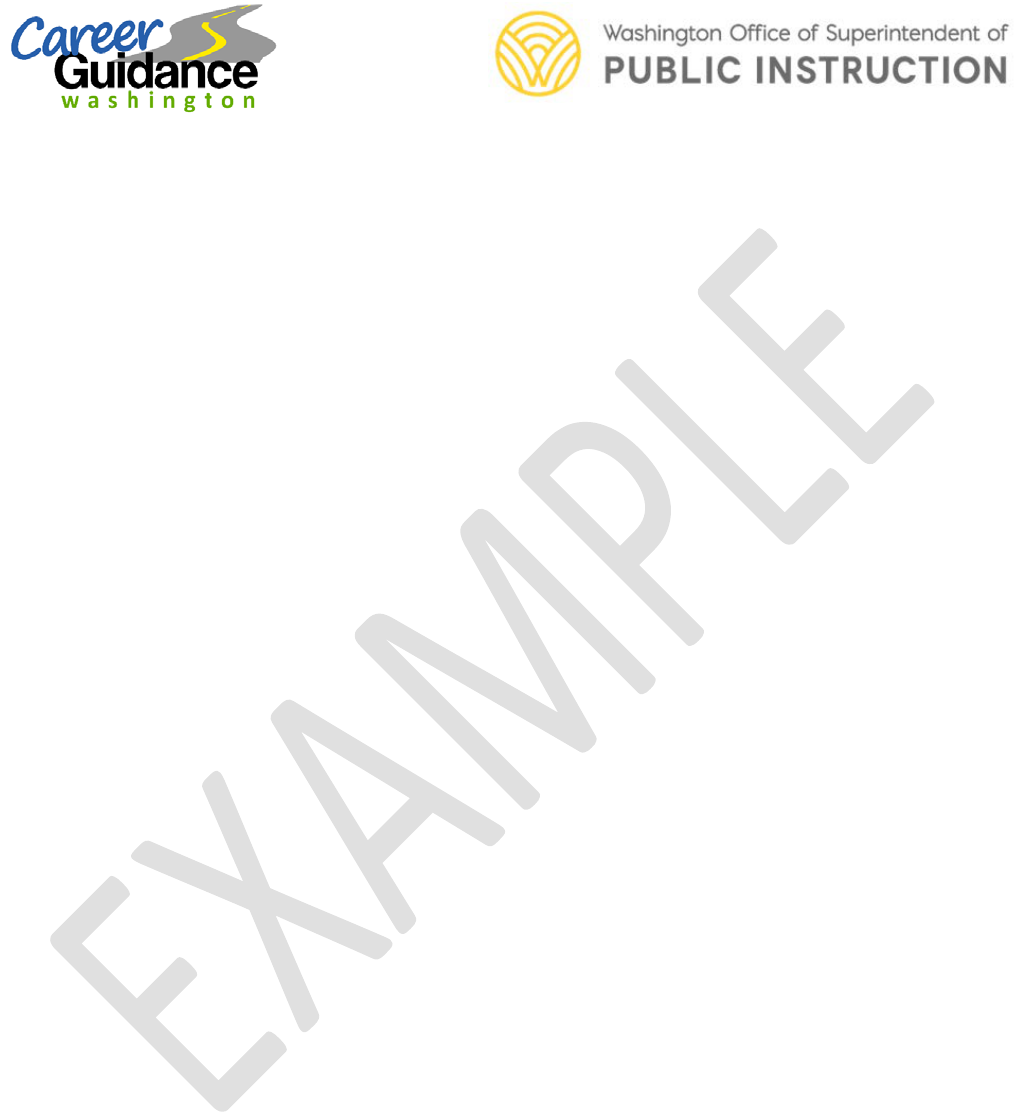
My High School and Beyond Plan
WHAT IS A HIGH SCHOOL AND BEYOND PLAN?
Welcome to your High School and Beyond Plan (HSBP)! To be ready for roughly 67% of the jobs in
today’s world, you need additional education or training after high school. Using the time you are given
to work on your HSBP can help you maximize your education and prepare to move forward after high
school graduation.
The HSBP graduation requirement focuses on three guidin
g questions:
Who am I?,
What can I become?, and
How do I become that?
Use these three questions as your guide to think about who yo
u are and what you are passionate about,
explore possible jobs that align with your interests, skills and dreams, and discover what kind of post-
high school education and/or training will best prepare you for a job that fits you!
Your school counselor, advisor and/or teachers
, and your family or guardian(s), can help you create and
update this plan as your interests and goals change. Use the activities that help build your HSBP to guide
your decisions about which are the best available classes to take. Ideally, you’ll be able to enroll in a
combination of required and elective classes that will provide an opportunity to explore your interests,
develop your skills, meet specific credit and course requirements, and prepare for your future goals.
Post high school options to consider as a meaningful first nex
t step after high school include on-the-job
training (including internships and public service), technical colleges, industry-recognized certificate
programs, apprenticeship programs, military training, or two/four-year colleges. There are multiple state
and federal financial aid programs and other sources of financial assistance that can help pay for the
further education and training you need to complete through one or more of these post-high school
options.
OSPI HSBP-IEP Transition Case Study - Kaleb George - November 2020Page 17 of 29
Page 1 of 29
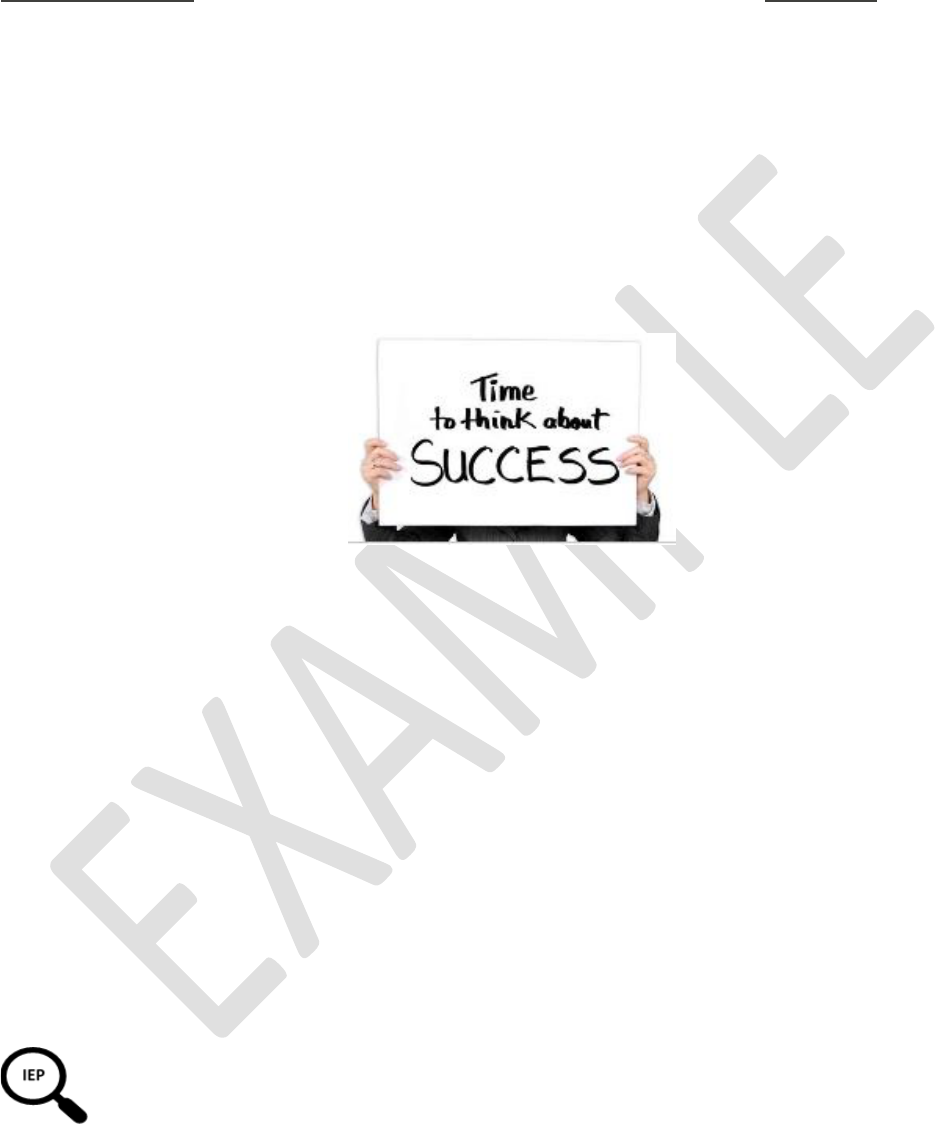
WHAT MUST BE DONE TO COMPLETE THIS GRADUATION REQUIREMENT?
Required elements of your High School and Beyond Plan (sections will be underlined):
Identification of your career goals using a career interest inventory.
Identification of your educational goals.
A course plan that meets state and local graduation requirements, aligns with your career and
educational goals, and documents your chosen graduation pathway(s).
o As part of the course planning process, students must be informed o
f and provided access
to Dual Credit and College Bound Scholarship information and document any completed
Career and Technical Education (CTE) equivalency courses.
Evidence you received information about state and federal financial aid options.
A current résumé or activity log.
By 8th grad
e, yo
u will complete your first career interest inventory. The results can show you careers
that match your interests, skills, and personality. This information may help you decide what classes to
take in 9th grade. You should revise your plan each year to match your changing interests and ideas
about what you want to do the year after graduating from high school.
If you have not met standard on your statewide math, science, and/or English language arts (ELA)
assessments; your plan must also include interventions and academic supports, additional courses, or
both that can help you meet related course and credit graduation requirements.
Remember, the HSBP is used to guide your high school experience and prepare you for postsecondary
education or training and/or a career. This plan should be updated each year to:
reflect your academic progress through a review of your high school transcript,
document accomplishments and activities, and
assess progress toward identified goals and make adjustments if needed.
Your plan should
be revised as often as necessary to accurately reflect your changing interests,
goals, and needs. If you also have an Individualized Education Plan (IEP) transition plan, your
HSBP and IEP transition plan will be developed in alignment with each other. You may notice
this IEP magnifying glass throughout the document as a cue for which information should be aligned.
School staff can use the information in your plan to help connect you with opportunities aligned with
your HSBP, so help them help you by taking this seriously and only including information that accurately
reflects your current plan!
OSPI HSBP-IEP Transition Case Study - Kaleb George - November 2020Page 17 of 29
Page 2 of 29
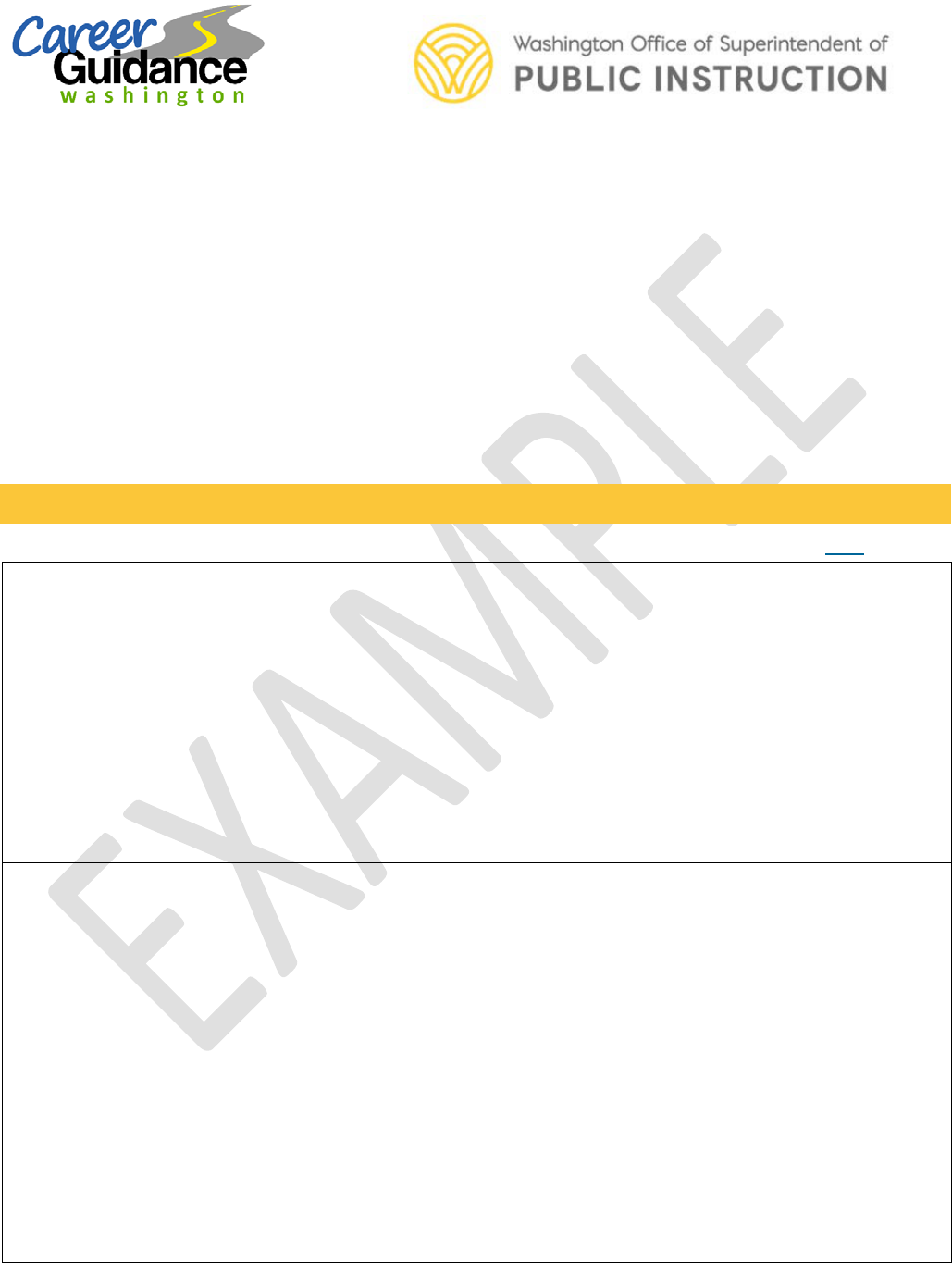
My High School and Beyond Plan
Name: Kaleb George SSID: 0000001
School(s): Western Gorge High School Grad Year: 2020 (Grad Cohort 2018)
School Counselor/Advisor/Case Manager: Mary Jones
PERSONAL PROFILE – WHO AM I?
What interests, skills, abilities, values, goals, dreams, and personality traits fit you?
Middle School:
• I am friendly, easy going and driven
• I like to work with my hands and work in groups
• I want to live at home to live with my parents and have money to buy things for my friends
• I want to get a job where I can help people
• I want to learn more about money and want to be a better singer and play sports
• I love to cook
High School:
• I am friendly, have good hygiene, can follow directions and am flexible.
• I learn best by seeing and doing.
• I want to live with my parents, get a paid job in an office and spend time with my family
• I want to take a swimming or singing class and learn how to independently shop.
• To be successful I need clear expectations, routines, written schedules and task lists
To achieve my goal of working in an office setting I am working on:
• Carrying my allowance money in a wallet and using a weekly budget
• Using a checklist and timer to stay focused, get tasks done and manage my time
• Practicing conversations and asking for help in the community
• Practicing finding information on my own
• Using my cellphone to communicate my location and other information to my family
• Participating in the School to Work Program
OSPI HSBP-IEP Transition Case Study - Kaleb George - November 2020Page 17 of 29
Page 3 of 29
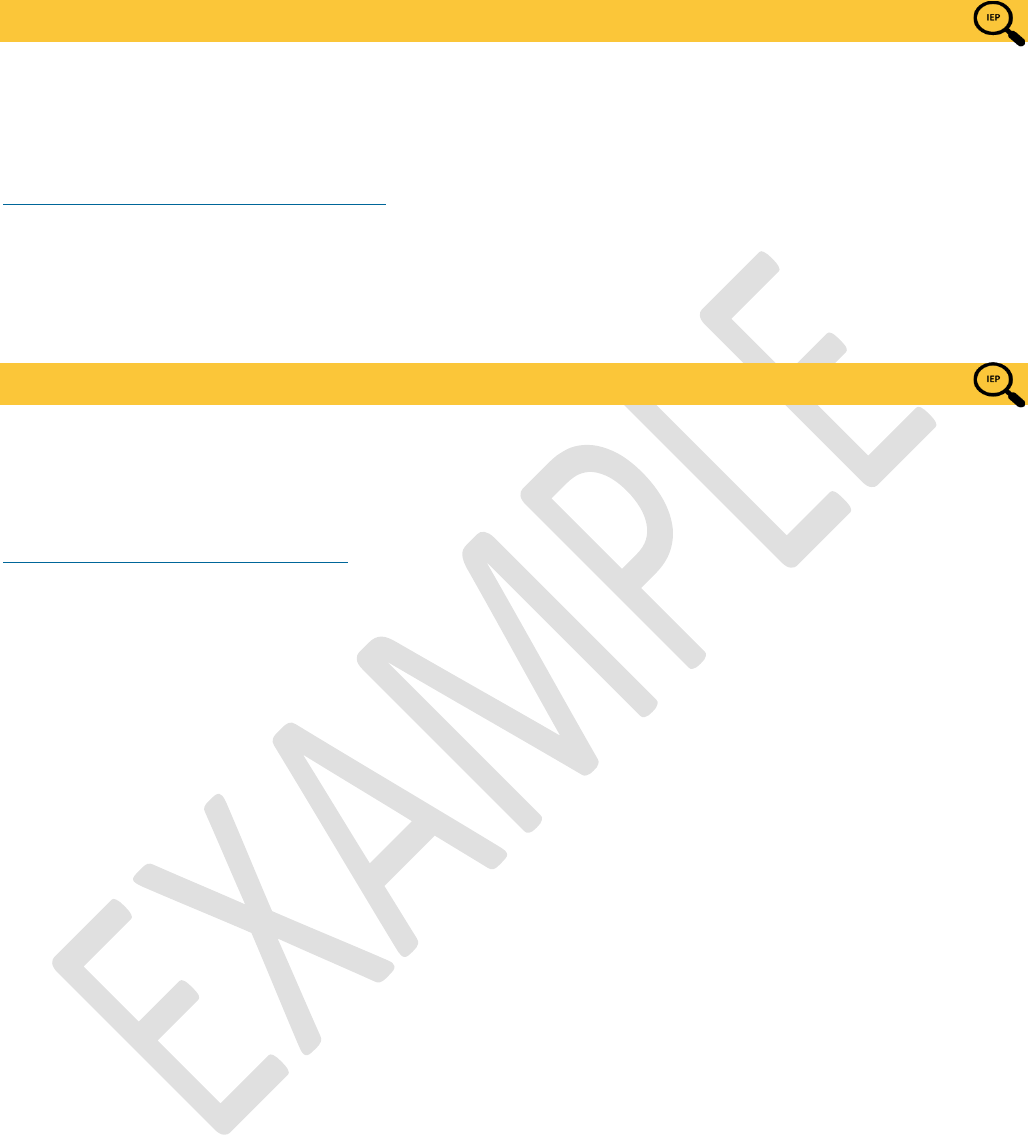
CAREER GOALS – WHAT CAN I BECOME?
What are some jobs and careers that match who you are and who you want to be? While a
career interest assessment must be taken by 8th grade, different assessments can be taken at
any time to guide your next steps as your interests and career aspirations change.
MY TOP CAREERS OF INTEREST:
1. Office Professional 3. Stocker
2. Courtesy Clerk 4.
EDUCATION GOALS AND PLAN – HOW DO I BECOME THAT?
What education or training do you need – both during and after high school – to prepare
for your career interest(s)? For students who are also served by an IEP, HSBP goals need to
align with the IEP transition plan goals.
MY EDUCATIONAL GOALS
Once you have ideas of possible career interests, use the websites listed in the Resources section at the
end of this High School and Beyond Plan (HSBP) to explore what post-high school option(s) can best
prepare you for the career(s) you are interested in. When setting your goals, know that there are financial
resources available to help students achieve their dreams.
First determine a “priority,” or top choice, educational goal; and then you can build your academic course
plan to reach that goal. Then, find a second post-high school education or training option that can also
prepare you for what you want to do. Knowing there is more than one post-high school option that can
prepare you for your career(s) of interest can provide some flexibility to change your mind and adjust
your course choices as needed.
MY TOP POST-HIGH SCHOOL GOAL
☒
On-the-job training: in an office setting
with supports. (See IEP Transition Plan)
☒
MY BACK-UP POST-HIGH SCHOOL GOAL
On-the-job training: in a warehouse setting
with supports
☐
Apprenticeship
☐
Apprenticeship
☐
Military (enlist)
☐
Military (enlist)
☐
Specialty or Career College
☐
Specialty or Career College
☐
Technical College
☐
Technical College
☐
Two-year College
☐
Two-year College
☐
Four-year College (includes ROTC
and Military Academies)
☐
Four-year College (includes ROTC and
Military Academies)
☐
Other:
☐
Other:
OSPI HSBP-IEP Transition Case Study - Kaleb George - November 2020Page 17 of 29
Page 4 of 29
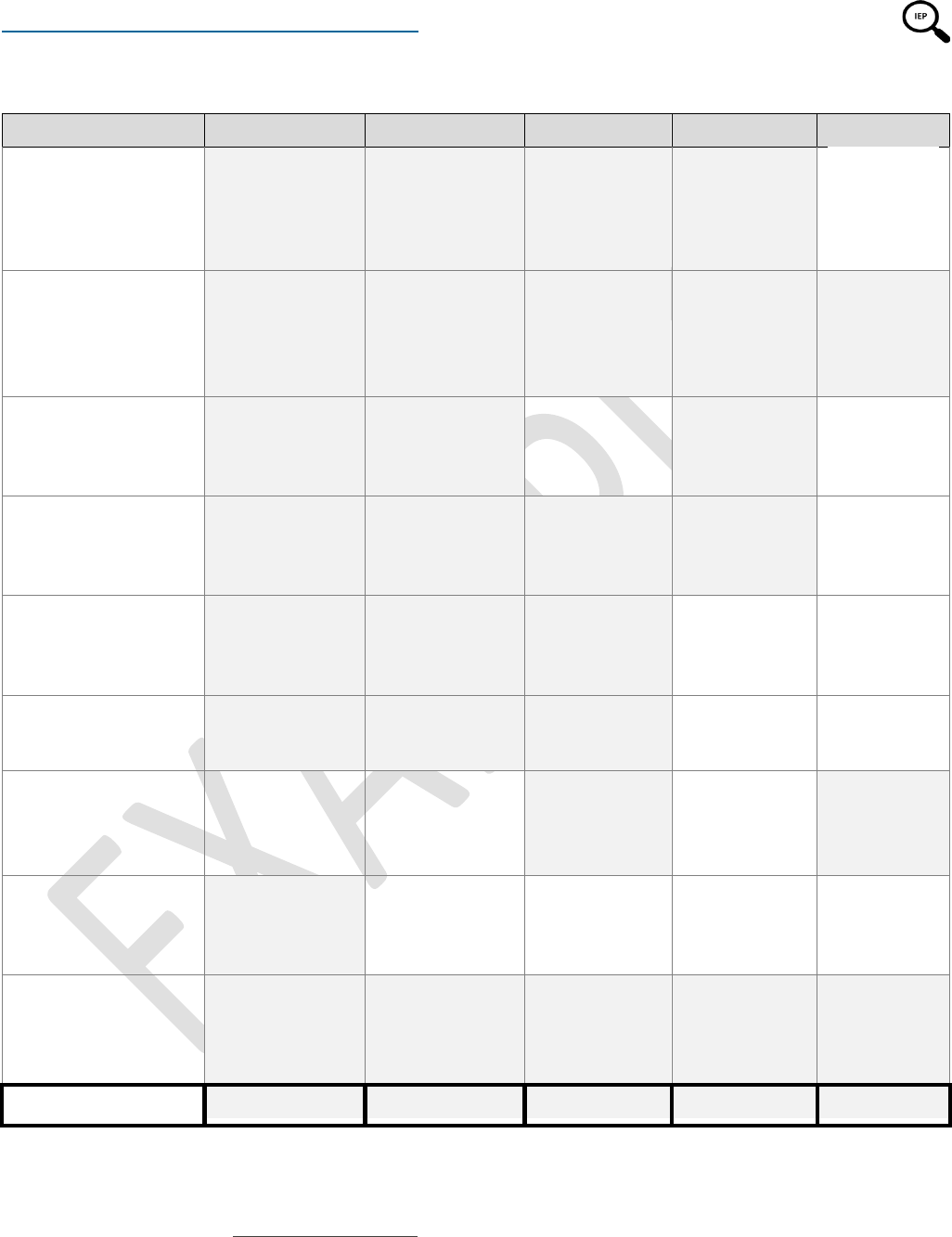
MY ACADEMIC COURSE PLANNER
Directions: List the courses you have taken (or plan to take) each year in high school. Pay attention to
local/state graduation requirements and admission requirements for post-high school options of interest.
SUBJECT AREA
GR 9
GR 10
GR 11
GR 12
12 Plus
English
Credits required for
G
raduation = 4
Applied
Communications
(1.0)
Applied
Communications
(1.0)
Academic
Work (1.0)
Employment
Literacy (1.0)
Mathematics
Credits required for
Graduation = 3
Personal Finance
(0.5)
Personal Finance
(0.5)
Pre-Vocational
Training (0.5)
Pre-vocational
Training (0.5)
Transition
Services (1.0)
Science
Credits required for
Graduation = 3
Applied Life
Science (1.0)
Applied Science
(1.0)
Applied Earth
Science (1.0)
Social Studies
Credits required for
Graduation = 3
World Studies
(1.0)
US History
(1.0)
Civics (0.5)
Psychology
(0.5)
Health and Fitness
Credits required for
Graduation = 2
Success
Oriented PE (0.5)
Creative Dance
(1.0)
Core PE (0.5)
Health (0.5)
*Arts or PPR
Credits required for
Graduation = 1
Arts/Crafts (1.0) Success
Oriented Music
(0.5)
Drawing and
Painting (0.5)
*World Language or
PPR
Credits required for
Graduation =
Career
Development
(1.0)
PPR:
Transition
Courses (1.0)
Career Technical -
CTE
Credits required for
Graduation = 1
Career
Awareness (1.0)
General Electives
Credits required for
Graduation = 4
Advisory (0.25)
Advisory (0.25) Advisory (0.25)
Advisory (0.25)
Developmental
Learning (1.0)
Transition
Services
TOTAL CREDITS: 22 5.25 5.25 5.25 4.75
Graduation requirements may vary. Please note:
• Local Graduation Requirements: In the first column make sure the credits required for graduation reflect your local high
school’s credit requirements.
• College Admissions Requirements: Refer to specific institutions’ admission requirements or Washington Student
Achievement Council (http://www.wsac.wa.gov/
)
OSPI HSBP-IEP Transition Case Study - Kaleb George - November 2020Page 17 of 29
Page 5 of 29
*PPR = Personalized Pathway Requirement; flexible credits based on High School and Beyond Plan (Complete pg. 7)

MY TRANSCRIPT, PROGRESS REVIEW
Review your grades/transcript and progress toward identified goals every year. Revise your course
choices and educational or career goals as your interests change.
☒
T
ranscript/Progress Review with my School Counselor/Advisor/Case Manager Date: 5/20/13
☒ Tra
nscript/Progress Review with my School Counselor/Advisor/Case Manager Date: 5/19/14
☒ Transcript/Progress Review with my School Counselor/Advisor/Case Manager Date: 5/19/15
☒ Transcript/Progress Review with my School Counselor/Advisor/Case Manager Date: 5/19/16
☒ Transcript/Progress Review with my School Counselor/Advisor/Case Manager Date: 5/18/17
☒ Transcript/Progress Review with my School Counselor/Advisor/Case Manager Date: 5/18/18
☒ Transcript/Progress Review with my School Counselor/Advisor/Case Manager Date: 5/13/19
MY PARENT/GUARDIAN/FAMILY CONNECTION TO MY PLAN
Engaging your parent(s)/guardian(s)/family in supporting your HSBP is an important part of the
process. Annual Student Led Conferences or student led IEP Team Meetings for middle and high
school students are considered a best practice for sharing your progress and inviting adults to
help you reach your goals.
High School:
☒
Academic Progress Review and Course Selection (SLC/IEP Team Meeting) Date: 5/20/13
☒ Academic Progress Review and Course Selection (SLC/IEP Team Meeting) Date: 5/19/14
☒ Academic Progress Review and Course Selection (SLC/IEP Team Meeting) Date: 6/03/15
☒ Academic Progress Review and Course Selection (SLC/IEP Team Meeting) Date: 6/02/16
☒ Academic Progress Review and Course Selection (SLC/IEP Team Meeting) Date: 5/18/17
☒ Academic Progress Review and Course Selection (SLC/IEP Team Meeting) Date: 5/04/18
☒ Academic Progress Review and Course Selection (SLC/IEP Team Meeting) Date: 4/29/19
OSPI HSBP-IEP Transition Case Study - Kaleb George - November 2020Page 17 of 29
Page 7 of 29

MY PERSONALIZED PATHWAY REQUIREMENT (PPR)
Depending on how many total credits your high school requires, there are at least 7 “flexible” credits –
4.0 electives and up to 3.0 PPR credits – that you can use to choose classes that explore possibilities and
best prepare you for the post-high school option you want to pursue.
For the 2.0 Wo
rld Language and/or second 1.0 Fine Art credit requirements, the PPR allows you to
substitute course(s) that better align with your career or educational plan. Course substitution decisions
must be aligned with your post-high school plan. Please note that while World Language is only required
for 4-year college admissions, it is a critical skill in an increasingly global society and economy.
Top Career(s) of Interest: Office Clerk
Post-High School Education/Training Plan (click in box next to your current first choice plan):
☒ On-the-job training ☐ Tech College/Program ☐ Military
☐ Apprenticeship ☐ 2-year
college ☐ 4-year college
☐ Other:
Cour
se(s) Replacing Fine Art (up to 1.0): Not Applicable
Course(s) Replacing World Language (up to 2.0 credits):
Career Development (1.0)
Transition Course (1.0)
How does my
career interest connect with the PPR course(s) I am taking or plan to take?
My transition courses are preparing me for on the job training to become an office clerk.
OSPI HSBP-IEP Transition Case Study - Kaleb George - November 2020Page 17 of 29
Page 8 of 29
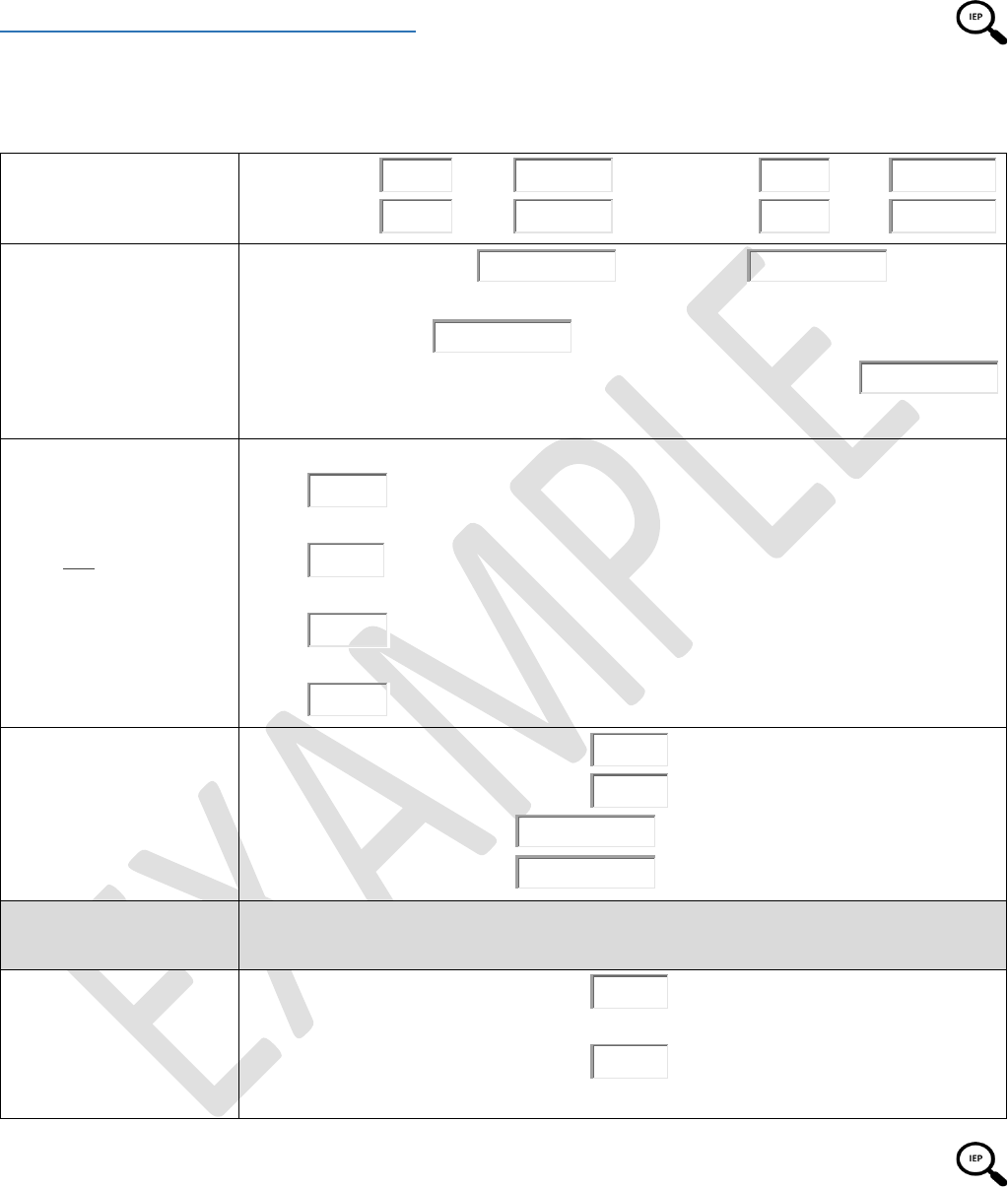
MY GRADUATION PATHWAY(S)
Students must complete at least one Graduation Pathway that will help prepare you for the post-high
school option you plan to pursue. Use this section of your HSBP to keep track of which graduation
pathway(s) you meet. You may combine different ELA (E) and math (M) options.
☐
ACT and/or
☐ SAT
Math Score = Date “ELA” Score = Date
Math Score = Date “ELA” Score = Date
☐ ASVAB (AFQT Score)
* Only ASVAB scores
from the student’s jr.
and/or sr. year are valid
for military entrance/
enlistment
Student’s AFQT Score = Date Taken
☐ Jr. Year* ☐ S
r. Year*
P
oste
d AFQT Score
Date of Posted Score [updated on SBE website by 9/1 annually]
☐ CTE Course
Sequence
[Does not need to meet
specific standards for
ELA and/or math; 2.0
total credits minimum]
Course #1
Credit
CTE Program
Course #2
Credit
CTE Program
Course #3
Credit
CTE Program
Course #4
Credit
CTE Program
☐
Dual Credit Class (E)
☐
Dual Credit Class (M)
☐
Dual Credit Exam (E)
☐
Dual Credit Exam (M)
Course Grade
Course Grade
Exam Score
Exam
Score
☐
SBA /
☒
WA-AIM
(check which one)
☒
Math Score 146
☒
ELA Score 162
☐ Transition Course (E)
☐ Transition Course
(M)
Course Gra
de
College (art
iculation agreement)
Course Grade
College (articulation agreement)
What is your
post-school goal? How is your chosen Graduation Pathway(s) preparing you?
My goal is to obtain supported employment in an office setting. My high school diploma and IEP goals
will help me obtain a paid position and give me the skills needed to work in an office setting
OSPI HSBP-IEP Transition Case Study - Kaleb George - November 2020Page 17 of 29
Page 9 of 29

MY RÉSUMÉ OR ACTIVITY LOG
Your HSBP must include a complete and current résumé by the end of 12th Grade. A résumé or activity
log summarizes who you are, including but not limited to, your experience, what you can do, and your
unique skills, talents, and abilities. You will usually need one if you are applying for a job, an internship, or
scholarship, and one may even be needed for a college application.
CREATING A RÉSUMÉ OR ACTIVITY LOG
For a high school student, a good introductory level résumé or activity log generally has five parts:
Contact information: The top of your résumé or activity log shows your contact information.
Make your name in a larger point size so it stands out. Your contact information should include
legal name, phone number (where you can be easily reached), and a personal email address that’s
“professional” – make a habit of checking it!
Objective: Briefly describe (2–3 sentences) why you want the job (or college acceptance or
scholarship), and what you can bring to the organization (why they should hire/choose you).
Not applying for a job right now? Write an objective for a job you want someday.
Making an activity log for writing a personal statement for college/scholarship applications?
Mo
re details about your leadership roles, goals, or unique life circumstances are needed.
Skills and Strengths: Even if you have never held a paid job before, you do have skills, abilities,
and interests. When you write about your skills and strengths:
Use short points, not s
entences. (Ex: Delivered after school care for two younger siblings)
Use action words. (Ex:
Led, organized, managed, designed, developed, delivered, prepared, etc.)
Use workplace “s
oft skills” to describe your strengths. (Ex: Clear communicator, punctual, team
builder, adaptable, problem-solver, possibility-creator, responsible, reliable, self-starter, etc.)
Use numbers and percentages to quantify your accomplishments. (Ex:
Delivered groceries to
200 elderly citizens during COVID-19 stay at home order)
Include technical or computer skills.
(Proficient with Microsoft Office and Adobe Flash)
Education: Note the name of your high school and date you expect to earn a high school
diploma. Include the names of classes that help build skills related to the job you plan to apply for,
especially Career and Technical Education (CTE), leadership and honors, or college level classes.
Consider including your grade point average if 3.0 or higher.
Experience: List your paid and unpaid jobs, including name of company (if applicable) and how
long you worked there, and community services/volunteer time and activities; especially any that
show your leadership skills and/or dedication. Briefly describe what you did. You can also list any
awards or other recognitions you have received either in or out of school.
Use the tracker provided on the f
ollowing page to document relevant information as you go through
high school, especially any community service hours if required for graduation, so that it is ready to be
used for creating and updating your résumé or activity log.
OSPI HSBP-IEP Transition Case Study - Kaleb George - November 2020Page 17 of 29
Page 10 of 29

MY RÉSUMÉ OR ACTIVITY LOG
Objective: Briefly describe what you want and what you can bring to the organization.
I am a hardworking outgoing young adult seeking to be part of a company’s team as a friendly
and effective office clerk.
Skills and Strengths: Remember, short points using action words.
• Typing, organization, greetings and following a schedule
• Filing and maintaining records
Education: High School, expected diploma date, related classes, GPA (if over 3.0).
3.88
High school(
s): Western Gorge Highschool Diploma date:
6/10/2020
Related cl
asses: Career Readiness, Pre-vocational training, Photography, Work Study
Experience: Work, activities, community service, leadership, awards, and recognitions.
What did you do
(name)?
For whom/what
organization?
How long?
Main responsibilities and tasks?
Leadership? Accomplishments?
Barista
Bean Coffee Shop
September
2017-June
2018
Making coffee, greeting customers,
keeping a clear workspace and
exchanging money
Volunteer
Connection Link
January 2018-
June 2018
Stocking, bagging items and greeting
customers
Mail Courier
Western Gorge
School District
Mail Room
September
2018-Present
Collect, sort and deliver mail, greet
recipients
OSPI HSBP-IEP Transition Case Study - Kaleb George - November 2020Page 17 of 29
Page 11 of 29

MY FINANCIAL AID OPTIONS
Since most adults change career paths multiple times during their working years, it is important to
understand what financial resources are available for when/if you choose to pursue further education
and/or training through an apprenticeship or a 2- or 4-year college or technical/specialty college.
This section of your HSBP is required to ensure all students know what support is available and how to
access state and federal financial assistance after high school.
I will find out my financial aid options through either the Free Application for Federal
Student Aid (FAFSA) or the Washington Application for Student Financial Aid (WASFA).
Go to https://wsac.wa.gov/apply
to access the different materials and information you and
your parent(s)/guardian(s)/family need to apply for these sources of financial aid.
I will be considered a dependent student for financial aid. ☒ Yes ☐ No
(Check for dependency status at
https://studentaid.gov/apply-for-aid/fafsa/filling-out/dependency).
By (digitally) signing below, I indicate that I have received information about which application I can
use (FAFSA or WASFA) and how to find out what information and materials are needed to complete
the application.
Name:
Kaleb George Date: 05/21/2019
1. If applicable, the colleges I am most interested in attending with their financial aid deadlines
are:
College: Priority D
eadline:
2. If I need help figuring out or applying for financial aid, the trusted adult I will talk to is: Mary
Walker, my school counselor
3. I can also get help at
my school’s Financial Aid Advising Day on: October 11th 2019
4. I applied for financial aid using the FAFSA or WASFA on (date):
☒ Not applicable
5. I applied for a College Bound Scholarship in middle school:
☐ Yes ☐ No ☒ Not applicable
(If not sure, ask your School Counselor, Advisor or Case Manager to help you find out.)
6. I have reviewed and compared my financial aid award offers:
☐ Yes ☐ No ☒ Not applicable
7. I do not plan to apply for financial aid because: My educational and career goals include
supported employment in an office setting. My plan at this time is not to attend college.
OSPI HSBP-IEP Transition Case Study - Kaleb George - November 2020Page 17 of 29
Page 12 of 29
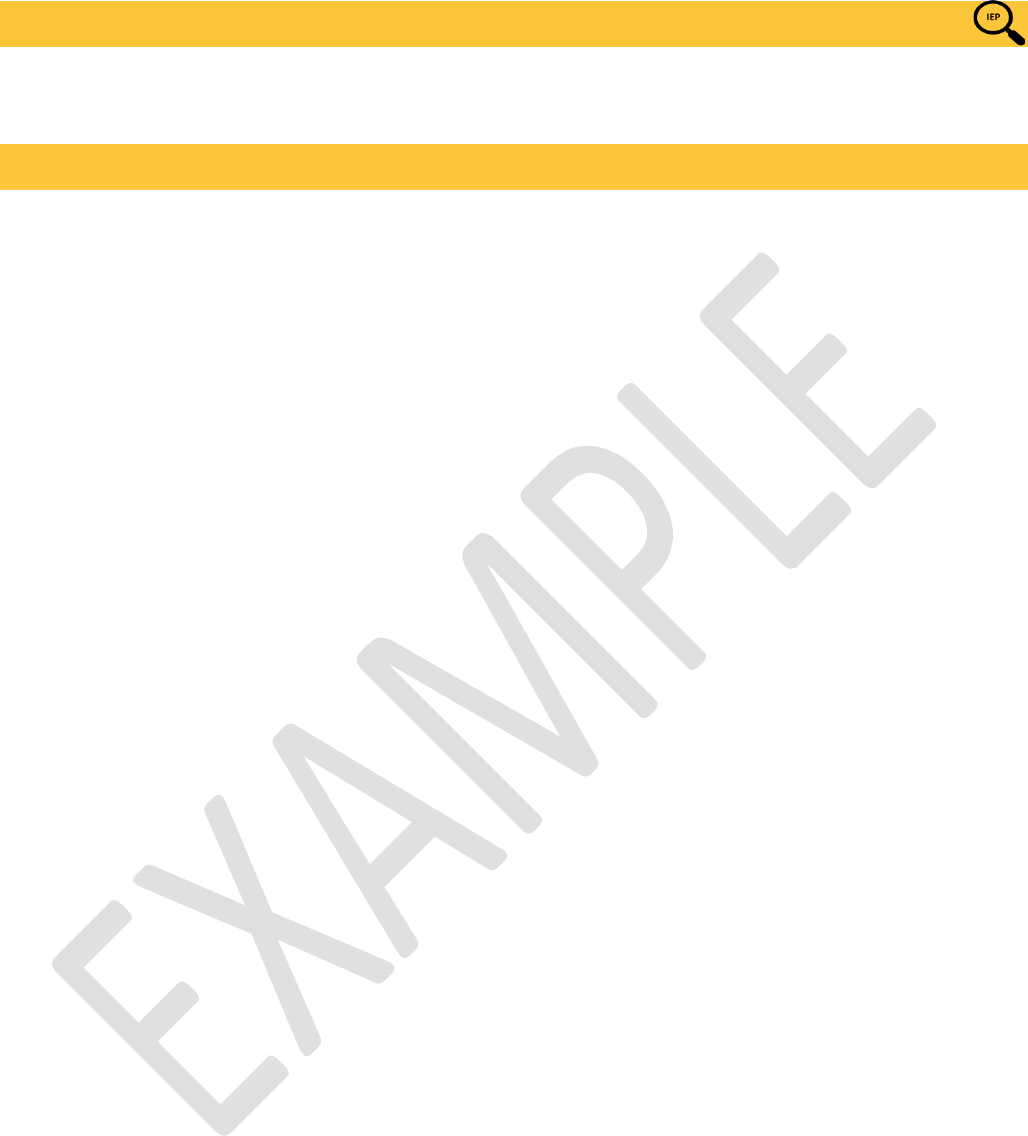
ACADEMIC INTERVENTIONS AND SUPPORTS
I have satisfied my state assessment and to not need any additional academic interventions and
supports in this area
ADDITIONAL REQUIREMENTS FOR 8TH GRADE STUDENTS
I met my state assessments in middle school and do not need additional supports going into
high school.
OSPI HSBP-IEP Transition Case Study - Kaleb George - November 2020Page 17 of 29
Page 13 of 29

RESOURCES FOR DEVELOPING HIGH SCHOOL AND BEYOND PLANS
Free Websites for Taking a Career Interest Inventory
Career Bridge: http://www.careerbridge.wa.gov/Survey_Cluster.aspx
Career One Stop: https://www.careeronestop.org/toolkit/careers/interest-assessment.aspx
Advance CTE: Interest Survey for Career Clusters: https://careertech.org/student-interest-survey
US Occupational Outlook Handbook: https://www.bls.gov/ooh/
Free Websites to Explore Post-High School Options
Using your career interests and goals to guide you, explore these links to various educational and
training options that can prepare you for a first job after high school.
https://readysetgrad.wa.gov/college/college-bound-
scholarship-program
Apprenticeship P
rograms:
http://www.lni.wa.gov/tradeslicensing/apprenticeship/
Apprenticeship Program of Study:
http://www.k12.wa.us/careerteched/pubdocs/ProgramsofStudyandApprenticeshipAlignmentGrid.pdf
CTE Programs of Study: http://www.k12.wa.us/careerteched/ProgramsofStudy.aspx
Industry Standard Certificate Programs and Career Clusters:
http://www.k12.wa.us/CareerTechEd/clusters/
Military Training: http://todaysmilitary.com/
Plan Your Future (planning resources for career/college/apprenticeship/financial aid):
https://wsac.wa.gov/actionplan
2-year Community or Technical Colleges in WA state:
https://www.sbctc.edu/our-colleges/search-college-programs/default.aspx
grade year!)
4-Year Public Colleges in WA state: http://www.wsac.wa.gov/college-admissions
4-Year and 2-Year Colleges (Out of state/Private)
o College Board’s Big Future:
https://bigfuture.collegeboard.org/
o Peterson’s College Guide: https://www.petersons.com/college-search.aspx#/sweeps-modal
Free Resources to Inform Students About Financial Aid Applications
Use these links to access FREE resources and support to help you and your family understand and apply
for potential financial aid options.
How to Create your FSA ID for the FAFSA (video)
at https://www.youtube.com/watch?v=Fp-
fAMe4aa0&feature=youtu.be
College Bound Scholarship information at
(remember to apply by June 30
th
of your 8
th
Washington College Grant information at https://wsac.wa.gov/wcg
FREE texting reminder service (for financial aid steps) at https://wsac.wa.gov/otterbot
OSPI HSBP-IEP Transition Case Study - Kaleb George - November 2020Page 17 of 29
Page 14 of 29
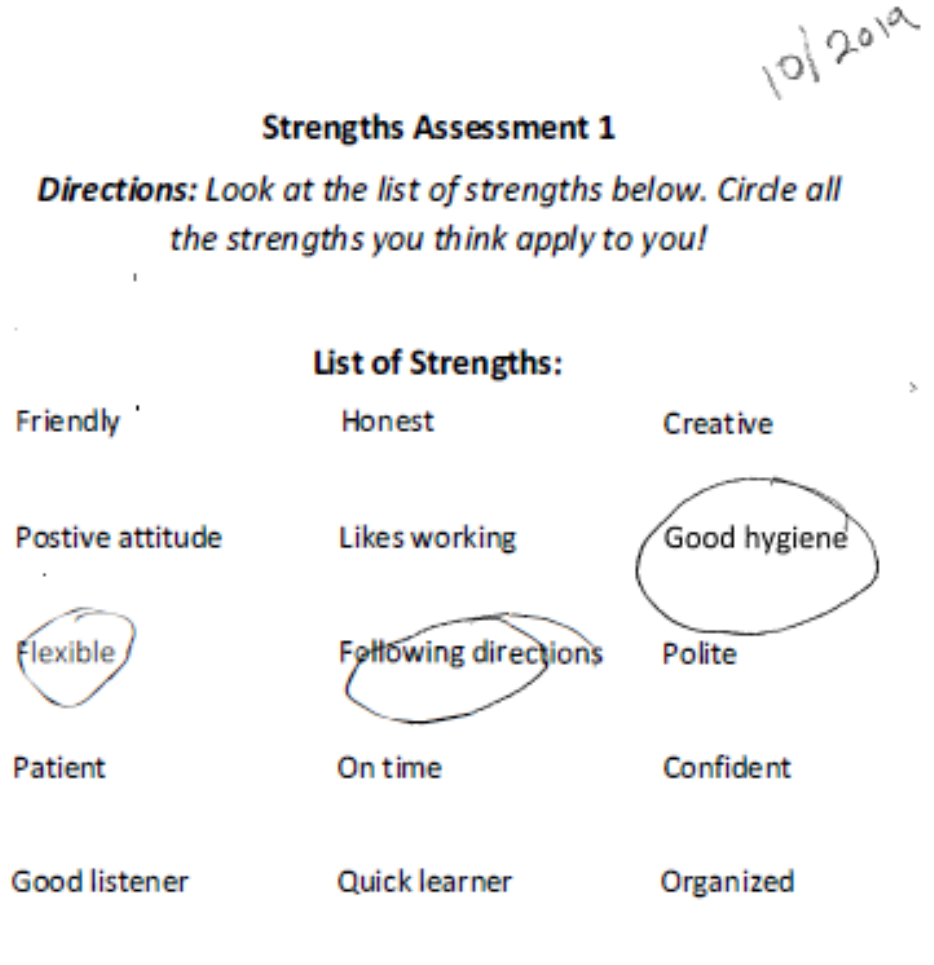
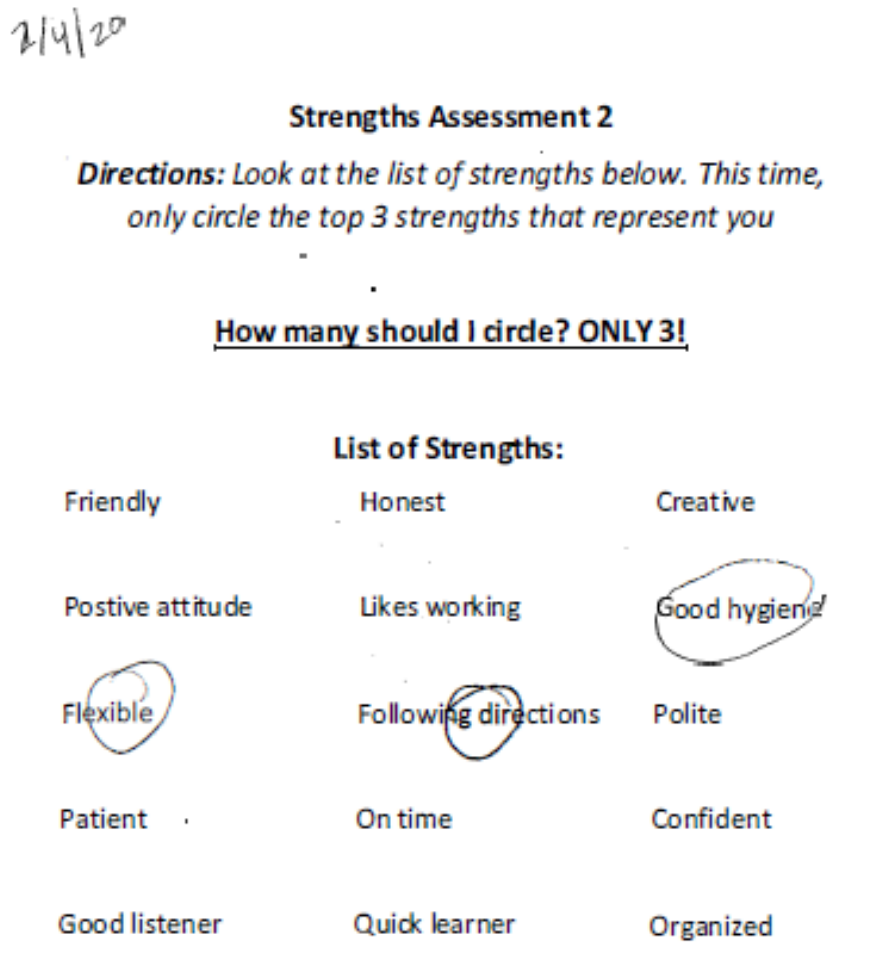
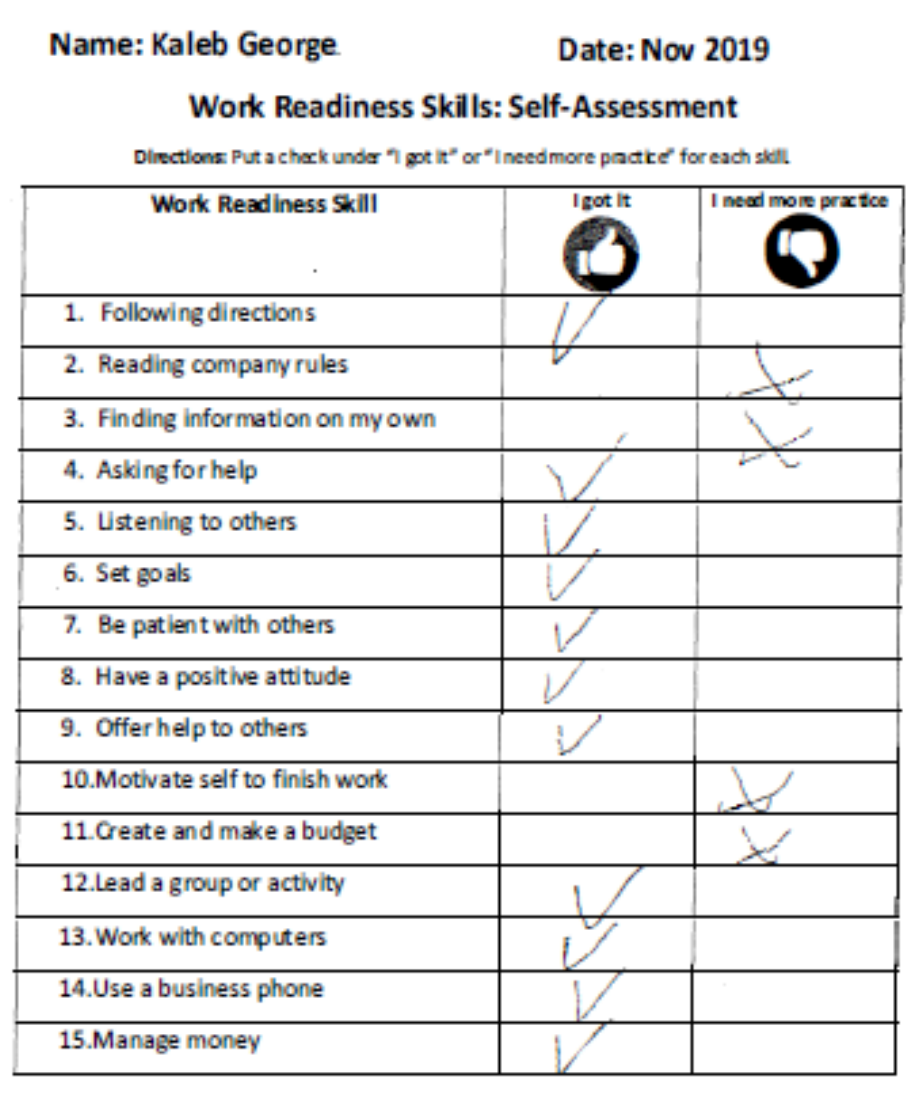
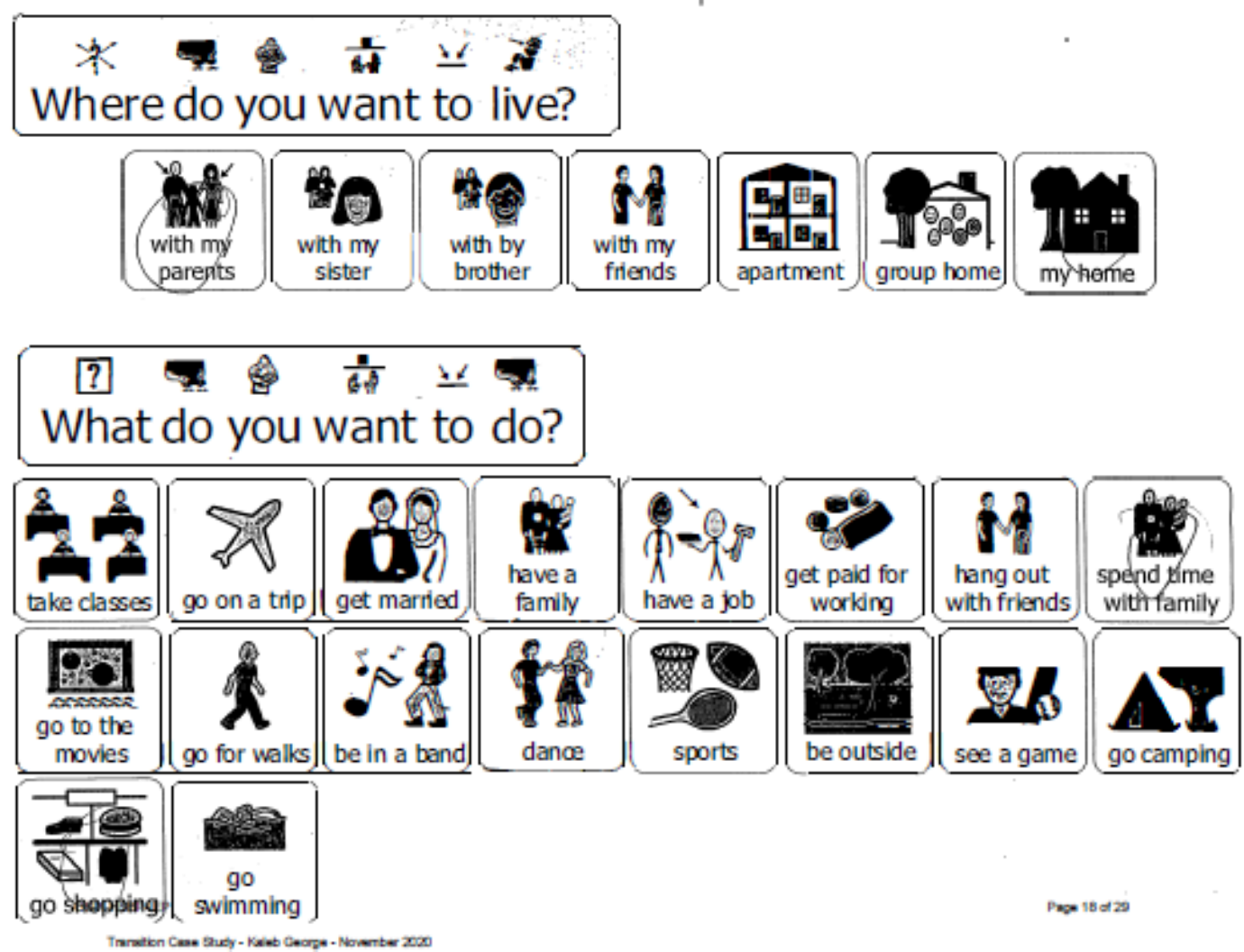
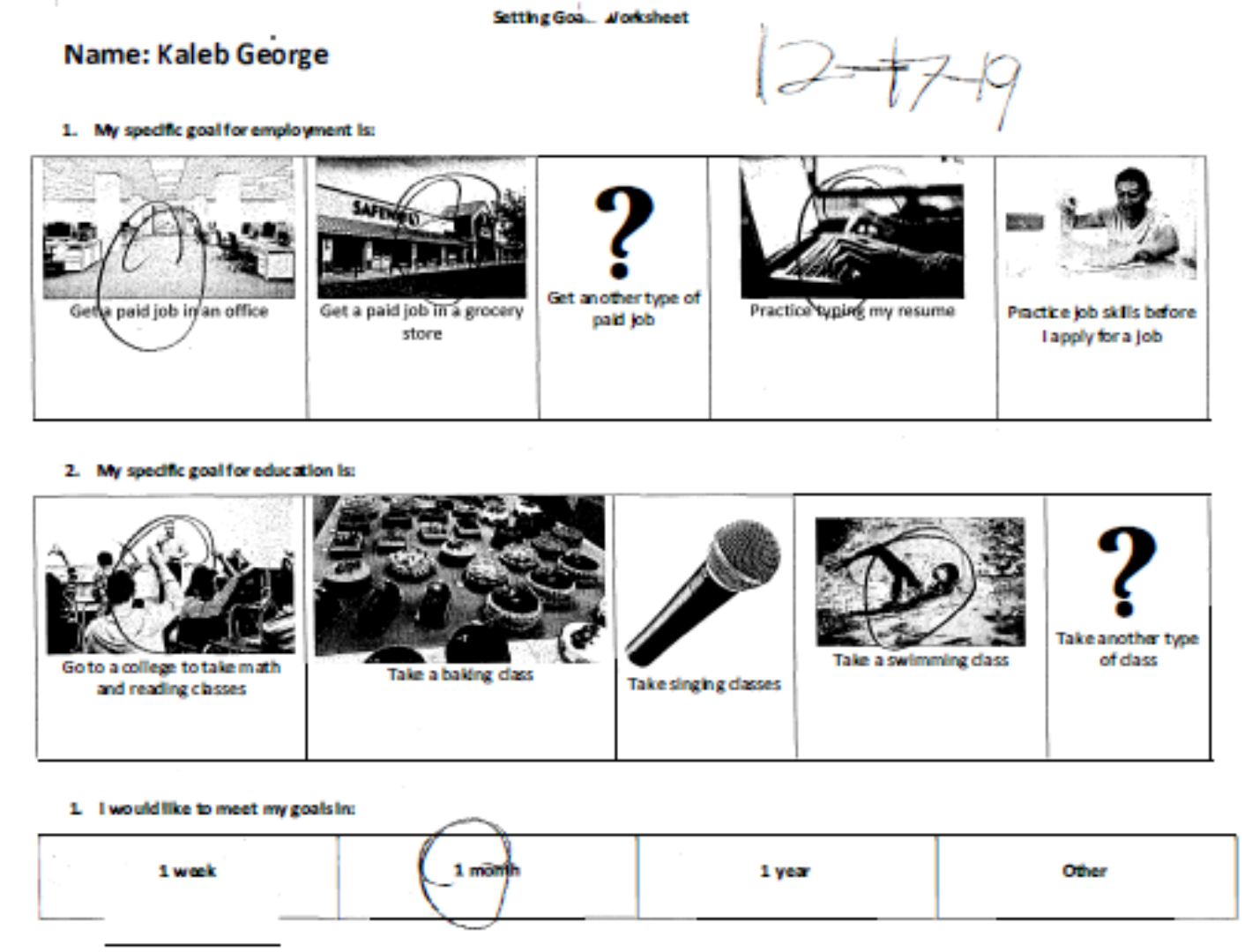
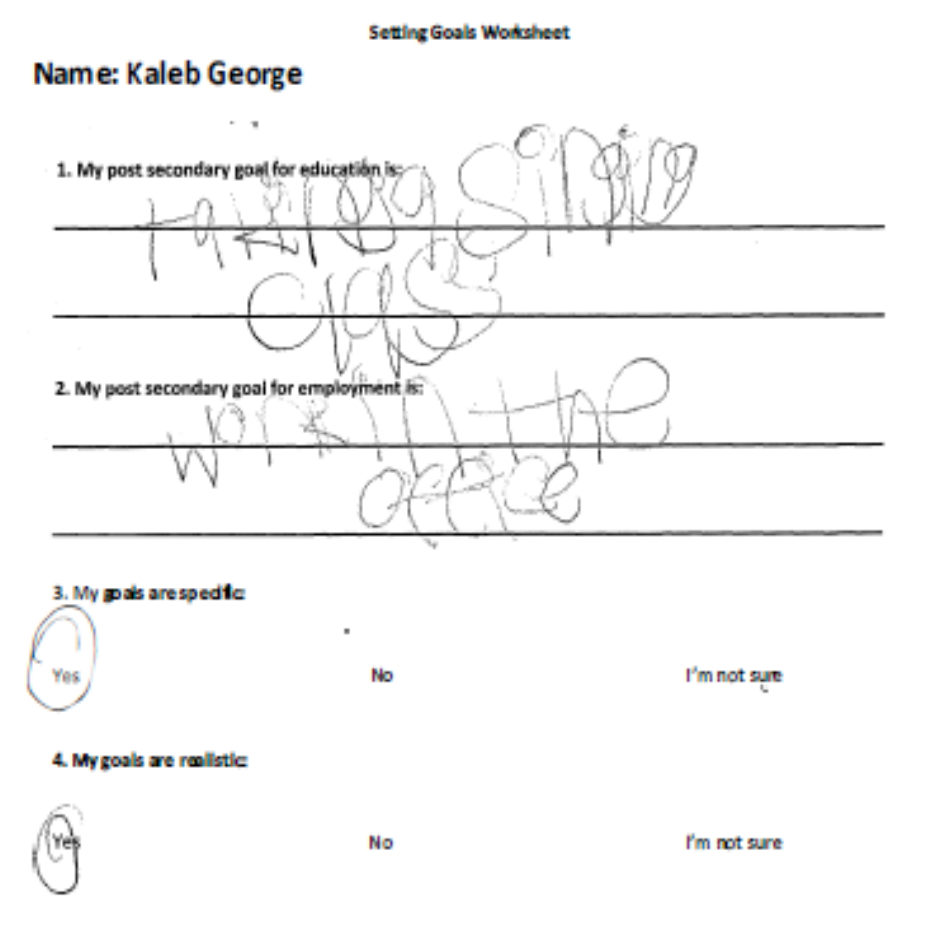


EXCERPT: INDIVIDUALIZED EDUCATION PROGRAM (WITH SECONDARY TRANSITION)
Student name:
Kaleb George
Date of IEP meeting:
5/20/2019
Student ID:
0000001
IEP annual review date:
5/17/2020
Eligibility category:
Autism
Evaluation Date:
5/01/2017
Primary language:
English
Birthdate:
09/05/1998
Age:
20
Grade:
12
District:
Western Gorge
Serving School:
Western Gorge High School
Parent(s) name(s):
Kara and Curt George
Resident School:
Western Gorge High School
Primary language at home:
English
Interpreter needed?
☐
Yes
☒
No
Surrogate parent:
☐
Yes
☒
No
If yes, name:
N/A
Primary staff contact name:
Mary Jones
Title:
Special Education Case Manager
PRESENT LEVELS OF ACADEMIC ACHIEVEMENT AND FUNCTIONAL PERFORMANCE
(including the strengths of the student and the concerns of the parents for enhancing the education of their student)
Present levels of academic achievement:
Kaleb is an adult student in his second year in the community-based program for transition services. There are no
formal tests while attending this program. He passed the Washington Alternate Assessment System: Portfolio
Assessment (WAAS) Portfolio in high school and there are no more tests at this time.
He receives 1:1 paraeducator sup
port throughout his school day to maintain safety in navigating school and
community locations, when crossing the street, while riding the metro bus and to help Kaleb engage in positive
behavior. Kaleb also receives specially designed instruction (SDI) in the following areas: Reading, Writing, Math,
Adaptive and Communication.
Kaleb’s academic goals may be considered truly functional in nature and target skills such as safety, shopping,
functional communication, and self-management.
Special Education Teacher input
from May 2019, Kaleb is able to:
• Independently eat and has greatly improved his ability to open packages and containers independently. Staff
must remain close to monitor food safety to ensure he does not eat too quickly and choke.
• Independently navigate the school building and transition from the restroom lockers, kitchen, and classroom
without assistance.
• Independently use the restroom and complete hygiene (brush, flossing, rinsing/spitting, and applying
deodorant). Staff currently remain close to provide reminders.
• Independently navigate technology of access preferred videos and content.
In the community, Kaleb requires additional instruction on self-management in order to gain safety skills and learn
how to be aware of his surroundings and remain on task. At times, Kaleb appears to be distracted (i.e. not looking at
the road) and will miss a critical step like looking before crossing. In the past, Kaleb had mastered crosswalk safety
and a community awareness goal that required him to answer ten questions related to community safety (naming
someone to go to in an emergency, finding a restroom, listing exits, identifying landmarks along route, etc.). Kaleb will
continue to gain instruction on self-management of on task behavior to increase his attention to the environment;
this instruction will work on generalizing these previously mastered goals to the community setting.
Regarding vocational skills,
Kaleb was previously working on increasing his work skills by reading a task list. He made
great process with his independent work skills. He demonstrated that he does best with routine tasks. This year he
excelled at mail delivery in the district office. He increased his independence to the point where he is largely
independent and just needs occasional reminders from his job coach to stay focused. At times, he will get distracted
by the environment, such as wanting to change wall calendars that are on the wrong month. He is able to complete
his job tasks in a timely manner, builds relationships at work and enjoys recognition and social praise for hard work.
Regarding social/communication skills, Kaleb was formerly working on learning how to make phone calls (completing
a four-step task analysis to call a communication partner of his choice). The person he calls the most is his mom.
Page 22 of 29
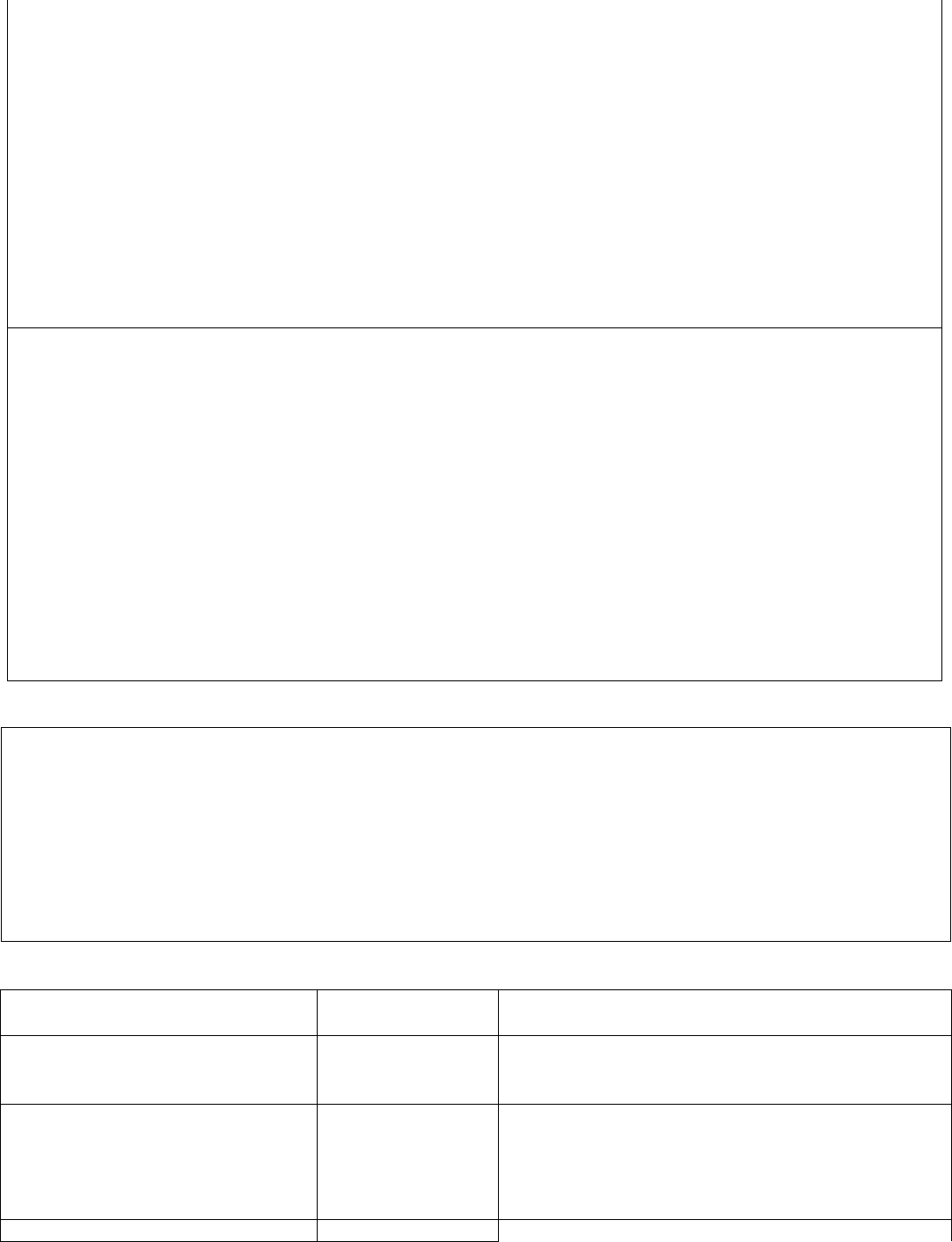
Kaleb got a personal phone last year and has been making progress making phone calls independently, carrying his
phone and independently keeping it charged. Kaleb has also been working on sending emails (completing an eight-
step task analysis independently). Kaleb mastered this goal with simple messages and will work next to use the “find
my iPhone” app to send information about his location to his family. He will also work on an informational texting
goal where he will be required to text information about his job or community experience to a communication
partner to improve written communication.
Regarding other goals, he
also worked on shopping (locating five items in a variety of grocery stores) and using the
internet (completing an eight-step task analysis to search for desired information).
SDI will be provided by the Special Education teacher with the support of program paraeducators who are monitored
by the Special Education teacher. The school counselor met with the Case Manager to review and discuss Kaleb’s
needs and services in preparation for the IEP team meeting. Additionally, the school counselor worked directly with
both Kaleb and the Case Manager to support the development of the High School and Beyond Plan.
Present levels of functional performance (e.g., communication, motor, social, behavior, life/adaptive skills, etc.):
According to the previous teachers report, Kaleb is a charming student who greets his peers and staff each morning.
He is eager to please staff and friends as well as participate in classroom and community instruction (shown through
raising his hand to volunteer, etc.). He is very hard working and can demonstrate great focus when he is settled into a
task. He follows daily routines, written schedules and task lists well; especially when given clear expectations. He has
excellent memory for tasks and events, which improved his ability to communicate verbally with others. An area of
growth this year has been Kaleb’s social and communication skills including his conversational exchanges and
initiation of conversation. Kaleb has greatly improved his ability to be flexible to changes in his routine (e.g. which
staff are present and modes of transportation). Additionally, his parents report that Kaleb has been happier and more
readily communicating his wants and needs at home. He has a great memory, is organized, and is always looking to
help others.
Parent concerns are continued safety in the community. The IEP team will continue to work on Kaleb’s self-
management skills in the community in order to increase his awareness of his behavior and build his independence.
Predictable routines help Kaleb understand safety boundaries.
Effect of the disability on the student’s involvement and progress in the general education curriculum:
Kaleb’s autism and cerebral palsy adversely impact his ability to communicate effectively and to read the emotions and
intentions of others. His low cognitive and adaptive function have a significant adverse impact on his ability to learn in
the classroom setting without special education support. Kaleb currently qualifies for SDI in the areas of Reading,
Writing, Math, Adaptive and Communication. At present, Kaleb’s academic goals may be considered truly functional in
nature and target skills such as functional communication, safety and self-management. Due to the nature of the
transition services, there are no general education teacher or courses. The community serves as the general education
setting in which Kaleb accesses daily with his support staff.
CONSIDERATION OF SPECIAL FACTORS:
1.
Does this student require special
transportation?
☐ Yes ☒ No
If yes, describe (if not addressed on the service matrix):
2. Does this student require Extended
School Year (ESY) services?
☐
Yes
☒
No
☐
To be determined by:
If ESY is determined by the IEP team to be necessary,
complete and attach the ESY addendum.
Date:
3. Does the student’s behavior negatively
impact his/her learning or the learning
of others?
☐ Yes ☒ No
If yes, consider the student’s need for positive behavioral
supports/ interventions, a Functional Behavioral Assessment
(FBA), and/or a Behavioral Intervention Plan (BIP).
☐ A Behavioral Intervention Plan has been developed for this
student (refer to the BIP addendum).
If yes, describe those needs as they relate to the student’s IEP:
Page 23 of 29
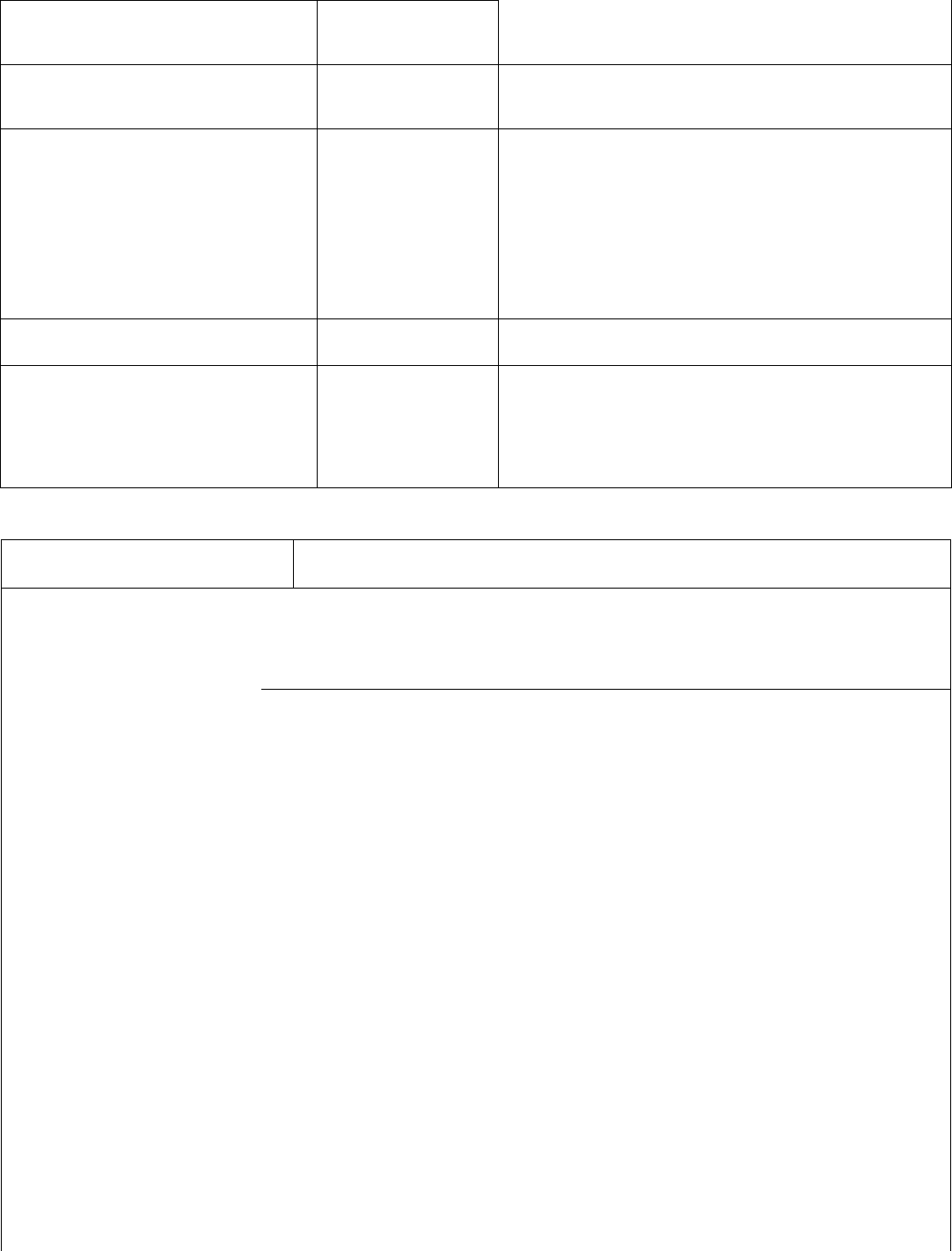
4.
For a student with limited English
proficiency, does the student have
language needs?
☐ Yes ☒ No
5.
For a student with a visual impairment,
is the student in need of Braille
instruction and/or use of Braille?
☐ Yes ☒ No
If yes, describe:
6.
Does the student have communication
needs? (Consider the communication
needs of the student, and in the case of
a student that is deaf or hard of
hearing, consider the language and
communication needs, opportunities for
direct communication with peers/
professional personnel in the child’s
language and communication mode.)
☒ Yes ☐ No
If yes, describe:
He has a functional communication impairment and
needs specifically designed instruction in
communication. See present levels of education
performance for more information.
7.
Does the student need assistive
technology devices and/or services?
☐ Yes ☒ No
If yes, describe:
8. Are there any other factors not already
addressed (such as medical concerns
or other issues), or other adaptations
needed?
☒Yes ☐ No
If yes, describe:
Community safety
SECONDARY TRANSITION
Student participated in IEP
meeting?
☒
Yes
☐
No
If no, what steps were taken to ensure that the student’s preferences/interests
were considered?
AGE APPROPRIATE TRANSITION ASSESSMENTS (include results of informal and/or formal assessments
including student’s needs, strengths, preferences, and interests):
☒
surveys/questionnaires
☒
profiles/portfolios
☐
vocational assessment(s)
☒
interview(s)
☐
other:
Strengths
According to a parent questionnaire, staff input, & a student interview information collected in April of 2020, strengths
are:
• Charming and endearing
• Happy and cheerful disposition
• Well-groomed and always dressed appropriately for work
• Very sensitive to the feelings of others—classmates, staff, community members
• Improved expressive communication skills—i.e. starting conversations, etc.
• Improved recall of events
• Improved willingness to complete more non-preferred tasks like metro routes and resume
• Improved ability to focus on lunch/eat slowly—staff should still monitor eating for choking danger
• Matching, sorting, and memory tasks
• Independent computer and iPad navigation—almost too much of a strength as he will occasionally attempt to
turn on the Internet to access preferred videos on the iPad versus earning this time on the computer
• Money skills and operating cash registers
• Good reading skills
• Learning and following routines—i.e. independently transitioning from activities on written schedule, raising
hand to volunteer, getting bus pass before community outings, etc.
• Dancing and singing—self-reported strength
• Jumping—self-reported
• Running and walking—self-reported
• Organized—self-reported
•
Punctual—self-reported
Page 24 of 29

•
Kaleb’s mom reports that he is a happy guy who is great at communicating his needs and wants. He has an
amazing memory, is organized, and enjoys helping others.
Preferences
Accordi
ng to a student interview & staff input, preferences are:
• Work with others
• Work during the day
• To work inside
• To work a job where he is both able to sit and move around
• Would like an organized workspace
• Would like a job where he can wear a uniform
• A well-structured and routine job
• Predictable routines
• Being a leader with activities.
Interests
According to a student interview & staff input, preferences are:
• Dancing
• Sports—Seahawks
• Music—Katy Perry, Bob Marley, Counting Crows, and more
• TV Shows/Movies—Shrek II, Family Feud, Wheel of Fortune
• Playing baseball
• Playing Uno, Bingo and Game Cube
• Participating in Sparkle Cheer
• Participating in music class
• Participating in Little Bits Horse Back Riding
• Community trips
• His mom states that his interests include playing games, shopping, spending time with friends and family,
playing basketball, and playing solitaire on his iPhone.
Needs
According to student interview and teacher input collected in April of 2020, Kaleb’s needs are:
• Recognition of positive behavior through verbal praise, recognition and other reinforcers
• 1:1 staff ratio in the community to ensure safety
• Staff to monitor use of bathroom—to ensure quick use and hygiene vs engagement in dancing
• Staff to remain in close proximity during eating—for safety, to prompt slow down when needed to prevent
choking
• Access to a token board to earn preferred reinforcers —i.e. computer time
• A written schedule
• Choices throughout his school day
• Instruction of self-monitoring behaviors vs monitoring the behaviors of others —staff can use the phrase “you
do you”
• Staff to make learning fun though the use of games like “beat the clock” or jumping high fives after completion
of a difficult task
• Placement further away from students who may engage in loud vocalizations or self-injurious behaviors
• Reminders to use calming strategies—take a deep break, use hallway as a quiet space, etc.
• Activities that allow for Kaleb to be social
• Instruction on when it is appropriate to dance and sing vs when it is not appropriate to dance and sing
• Opportunities to engage in physical exercise —running/walking the track, dancing, playing basketball, etc.
• Continued instruction on crosswalk safety
• Priming prior to work to review expectations—i.e. ask before action, getting started right away, etc.
• Use of social stories for difficult concepts—like a change in schedule or a new job task, etc.
• Minimization of unstructured idle time—like downtime between customers at the coffee shop.
Page 25 of 29
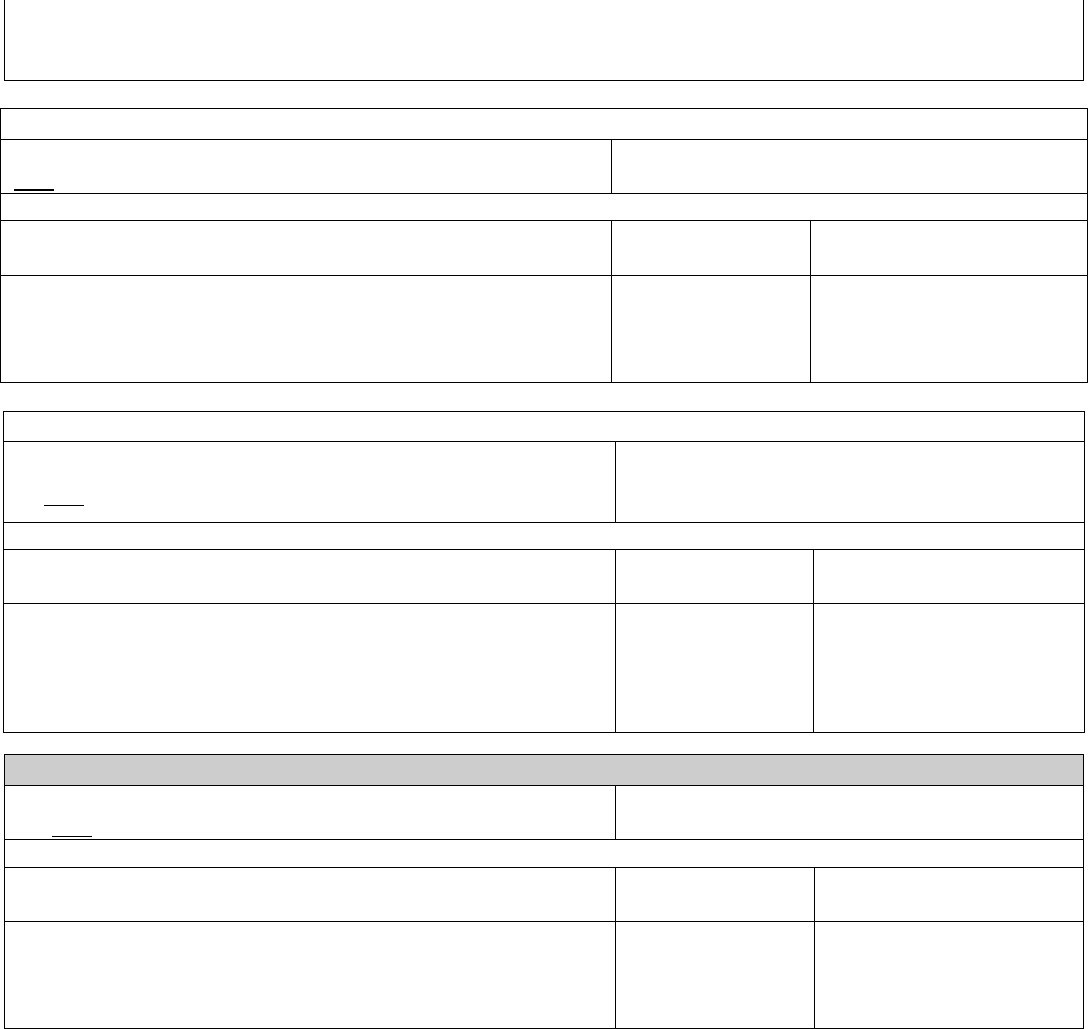
Currently he reports that he does NOT like the following: people yelling, being corrected in a negative tone, being
forced to try certain foods.
EDUCATION/TRAINING (Required to be addressed for all students)
Measurable Postsecondary Goal(s) (What the student will do
after graduation from high school in the area of education/training)
Upon leaving public school, Kaleb will receive on-
the-job-training in an office setting.
Transition Services (list Transition Services related to Education/Training, including IEP goal number(s) if applicable)
Transition Service
Staff/Agency
Responsible
IEP Goal #
Kaleb will visit work sites to job shadow an office assistant in 3
different work environments (private business, manufacturing,
school)
School District
G#1:Reading: Self-Management,
G#4 Math: Time Management,
G#5: Adaptive: Cellphone Safety,
G#6 Written Language:
Informational Texting
EMPLOYMENT (Required to be addressed for all students)
Measurable Postsecondary Goal(s) (What the student will do
after graduation from high school in the area of employment)
Upon leaving public school, Kaleb will obtain
employment in an office setting, with job coaching
supports.
Transition Services (list Transition Services related to Employment, including IEP goal number(s) if applicable)
Transition Service
Staff/Agency
Responsible
IEP Goal #
Kaleb will explore and applying for eligibility with DVR/DDA (if not
already a client) to support employment in an office setting.
School District
G#2: Communication: Reciprocal
Conversations,
G#7: Communication: Functional
Communication,
G#1: Reading: Self-Management,
G#4 Math: Time Management
INDEPENDENT LIVING SKILLS (Must be addressed if determined appropriate by the IEP Team)
Measurable Postsecondary Goal(s) (What the student will do
after graduation from high school in the area of living skills)
Upon leaving public school, Kaleb will
independently manage his money.
Transition Services (list Transition Services related to Independent Living Skills, including IEP goal number(s) if applicable)
Transition Service
Staff/Agency
Responsible
IEP Goal #
Kaleb will work on using a wallet to carry his money and keep on
his person during school community trips. He will also determine
what he wants to purchase based upon a set weekly budget based
upon a weekly allowance from his parents.
School District
G#3: Communication: Requesting
Help
Page 26 of 29
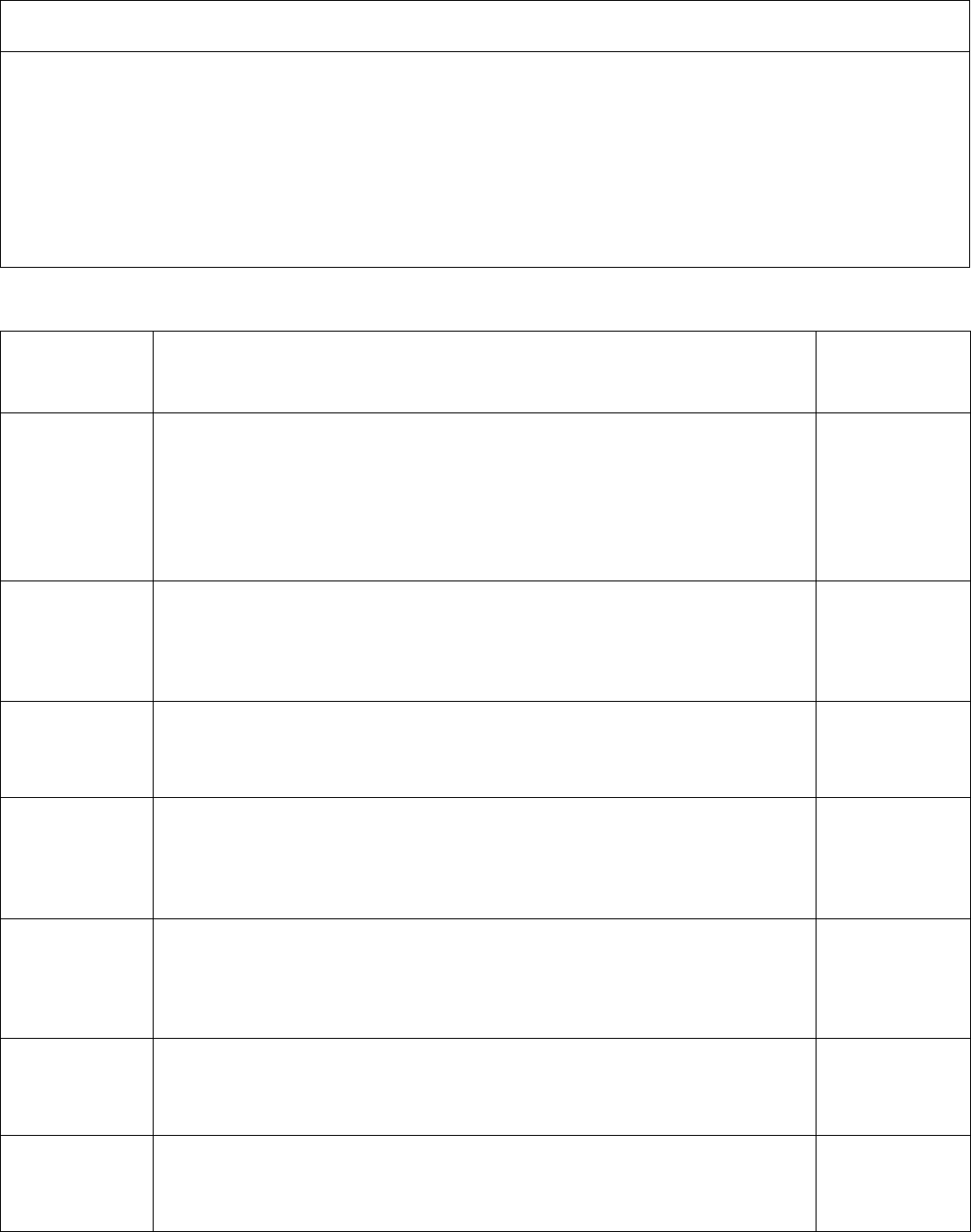
COURSE(S) OF STUDY (list the course(s) of study needed to assist the student in reaching his/her postsecondary goals,
unless already described above, or attach a list of courses)
Kaleb will have functional academics and school-based internships that lead to internships in the community. In
addition, Kaleb will receive adaptive skills instruction related to pre-vocational and vocational instruction and leisure
training. Due to this emphasis on community-based internships, the 40 hours of community service will be earned at
the community job site experiences. To help Kaleb generalize skills across a variety of settings, instruction and practice
will be provided in school and community settings. Kaleb's projected graduation date is in 2020 in order to provide
sufficient time for mastery of skills. However, Kaleb can graduate before age 21 after he has connected with the
appropriate adult agencies. The extended graduation date will also provide time to connect to adult agencies that can
support Kaleb in accomplishing the post-secondary goals. Kaleb will earn a certificate of individual achievement (CIA)
and has already passed the WA-AIM Assessment.
MEASURABLE ANNUAL GOAL(S)
Subject Area &
Goal #
Measurable Annual Goal
Method/Criteria for
Evaluating Progress
(if not addressed in a
separate document)
Reading: Self-
Management
Goal #1
By 5/13/2020, when given a self-management checklist (hard copy or accessible
on a tablet, watch, or phone), predetermined intervals of time, and classroom
opportunities (i.e., morning group, afternoon group) to self-manage his on-task
behavior (on task defined as: hands still, on-topic vocalizations) first in the
classroom, then in the community, Kaleb will complete all steps necessary to self-
manage on task behavior for 15 minutes improving ability to self-manage his on-
task behavior from 5 minutes to 15 minutes.
as measured by
teacher data
reviewed weekly
Communication:
Reciprocal
Conversations
Goal #2
By 5/13/2020, when given a change in routine or schedule (i.e.: staff/student
absences, change in jobsite, etc.), Kaleb will independently make at least three
on-topic reciprocal conversational exchanges (i.e.: question, comment, comment
in regards to an event/change) improving his social skills from 0–5 occasions to
4–5 occasions.
as measured by
teacher data
reviewed weekly
Communication:
Requesting Help
Goal #3
By 5/13/2020, when given weekly shopping trips in the community, (i.e. Safeway,
Fred Meyer, Grocery Outlet, Walmart, etc.), Kaleb will independently verbally
request help from a store clerk when he is unable to locate an item improving his
ability to shop from 0–5 opportunities to 4–5 opportunities.
as measured by
teacher data
reviewed weekly
Math: Time
Management
Goal #4
By 5/13/2020, when given access to his cell phone or watch, Kaleb will
independently follow the steps necessary to manage his own time independently
improving his ability to transition from one activity to the next from 0% of
opportunities on three consecutive occasions to 80% of opportunities on three
consecutive occasions.
as measured by
teacher data
reviewed weekly
Adaptive:
Cellphone Safety
Goal #5
By 5/13/2020, when given access to a cellphone and the app "find my iPhone"
Kaleb will follow steps necessary to communicate his location to his parents (or
sister) by completing the following steps improving functional communication &
safety skills from completing 0–6 steps on three consecutive opportunities to
completing 5–6 steps on three consecutive opportunities
as measured by
teacher data
reviewed weekly
Written Language:
Informational
Texting
Goal #6
By 5/13/2020, when given access to his cell phone, Kaleb will text a family five
details about his job experience improving texting and functional communication
skills from 0–5 details on three consecutive occasions to 4–5 details on three
consecutive occasions.
as measured by
teacher data
reviewed weekly
Communication:
Functional
Communication
Goal #7
By 05/13/2020, when given a direction or when listening to others Kaleb will
repeat the direction or information using a complete sentence and appropriate
vocal volume improving functional communication skills from 0–5 opportunities
to 4–5 opportunities.
as measured by
SLP data
reviewed weekly
ACCOMMODATIONS AND MODIFICATIONS
Page 27 of 29
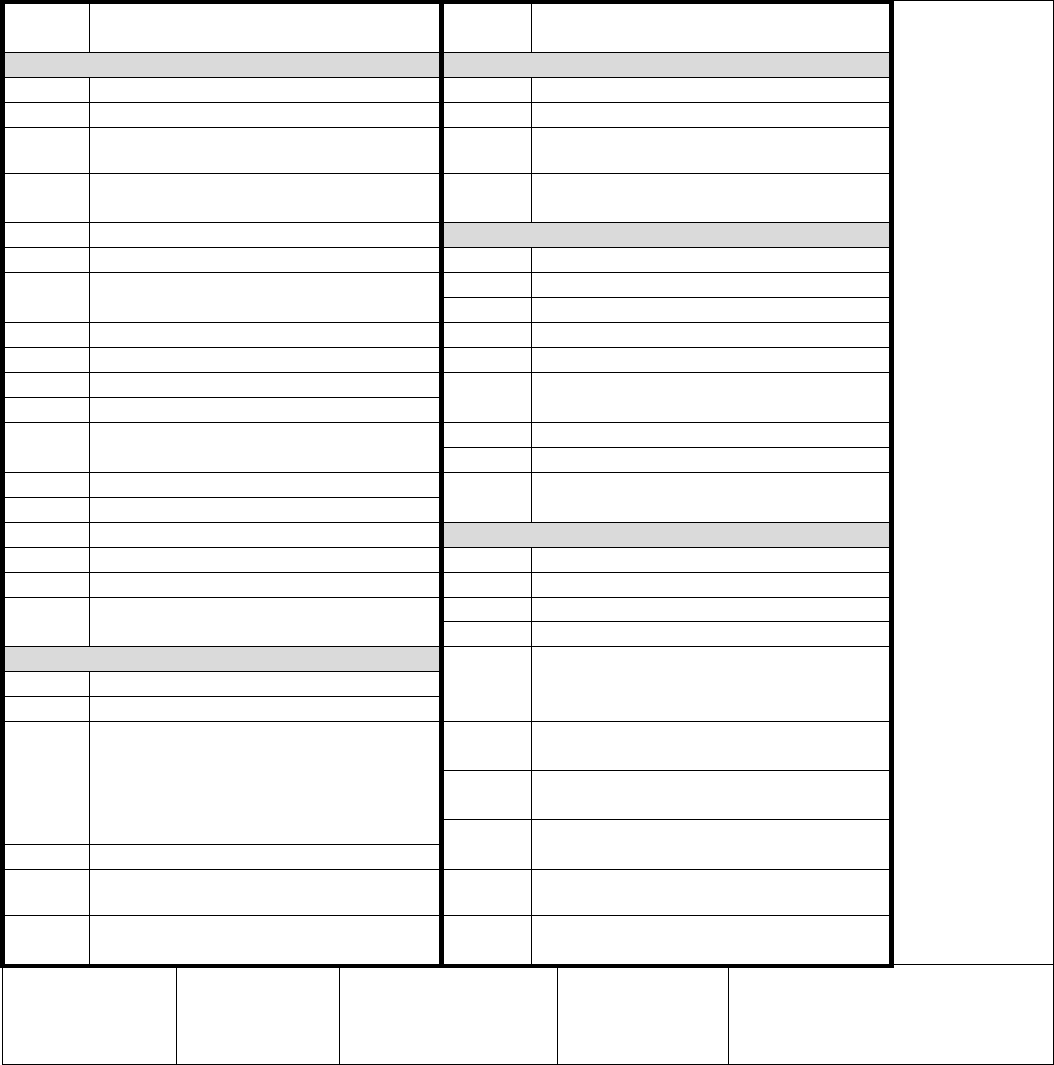
Subject
Accommodations/
Modifications Needed
Subject
Accommodations/
Modifications Needed
POINTS TO
CONSIDER:
• The IEP team
makes the
determination of
what
modifications
and individual
accommodations
are necessary for
the student.
• Copies of this
page should be
provided to the
general
education
teacher(s) or
other staff who
will be
responsible for
making these
accommodations.
• Accommodations
provided on state
and districtwide
assessments (as
noted on the
previous page)
should be those
that are provided
as part of the
regular
instructional
program.
Presentation
Setting
Use large print/Braille/audio books
a
Individualized/small group instruction
Audio Digital Books
Preferential seating
Alter format of materials (highlight, type,
spacing, color-code, etc.)
a
Reduce environmental distractions (test/
study in separate location, noise buffers, etc.)
Provide study outlines/guides/graphic
organizers
a
Other: Reduced noise work environments
Cloze Reading Strategy
Response
Read class materials orally
Speech to Text
Low-vision devices (magnifiers, Closed
Circuit TV, etc.)
Text to Speech
Allow dictation to a scribe
Sign Language – ASL or SEE
a
Allow use of a calculator
Shortened assignments
Allow use of digital recordings
Limited multiple choice
Utilize oral responses to
assignments/assessments
a
Modify/repeat/model directions
Rephrase test questions and/or
directions
Spelling and grammar check
Hands-on assignments
Provide test/assessment study guide
Other:
Provide extra credit options
Simplify text wording/language
Other
Read class materials orally
Provide desktop list of tasks
Assign peer tutor/note taker
Provide homework lists
a
Other: Predictable daily routine with task
list
Behavior plan/contract
Provide daily assignment list/schedule
Timing/Scheduling
Modified grading (describe below):
a
Prior notice of assignments/assessments
Extra time to complete assignments
Modify student’s schedule (describe
below):
q
Other: Adult Proximity
a
Other: Allow movement breaks and
standing while working
a
Other: Positive reward system embedded
within self-monitoring and task lists
Extra time on assignments/assessments
a
Allow breaks (during work, between tasks,
during testing, etc.)
a
Other: Social Stories
a
Other: break tasks into manageable parts
a
Other: School/Home Communication
System (daily)
a.
All subjects
b. Reading
c. English
d.
Spelling
e.
Math
f. Science
g. Social Studies
h.
History
i.
Health
j. Economics
k. Physical Education
l.
Music/Art
m.
Vocational
n. Lunch/Recess
o. Library
p.
Extracurricular Activities
q. Other: Community settings
r. Other:
Page 28 of 29
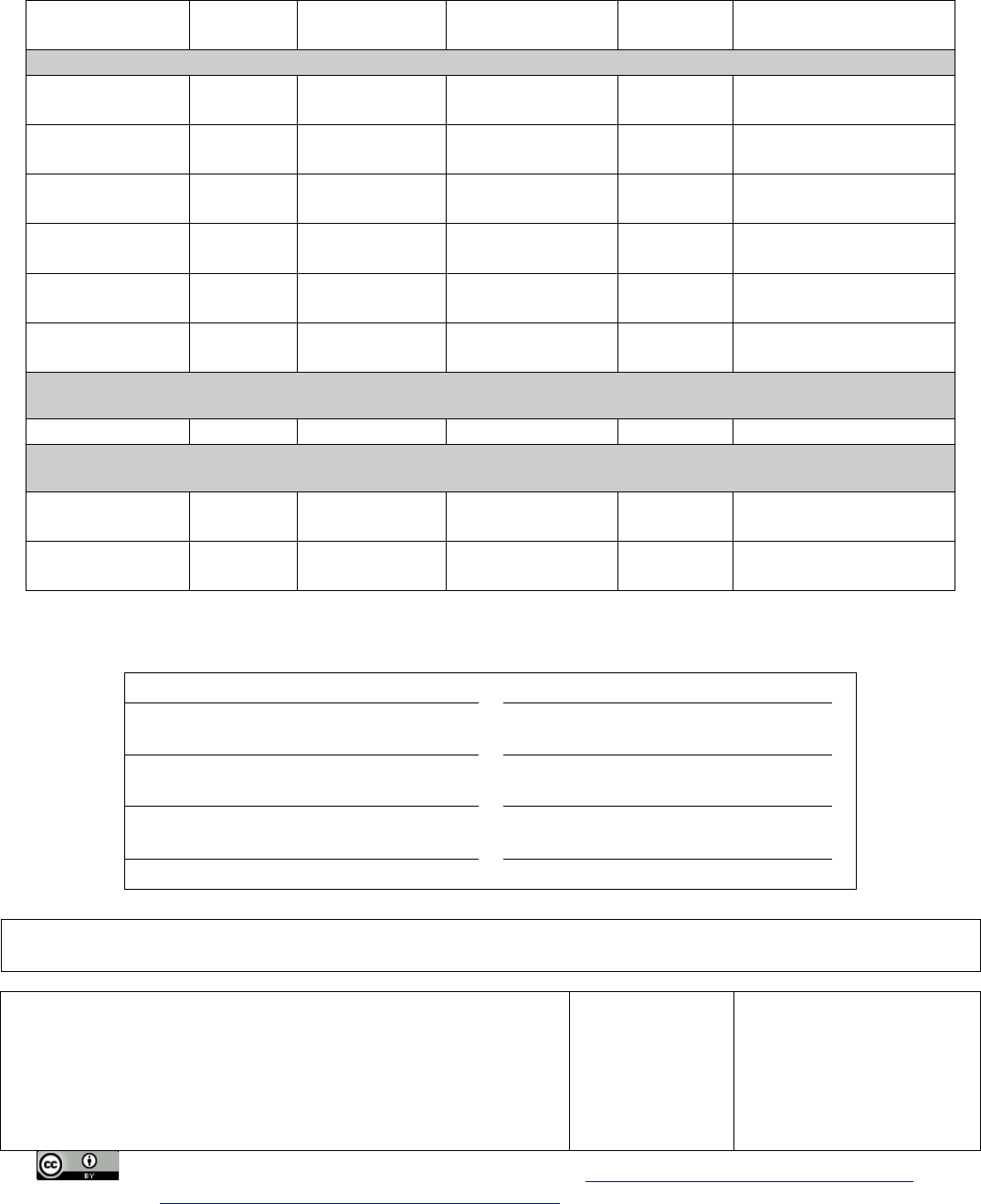
SUMMARY OF SERVICES MATRIX
Service
Initiation
Date
Frequency
(e.g., minutes per week)
Location
(setting)
Duration
(end date)
Staff Responsible for
Delivering Service
Special Education (specially designed instruction):
Adaptive 5/20/2019
630 Minutes
Weekly
Special Education 05/16/2020 Special Ed Teacher
Reading 5/20/2019
150 Minutes
Weekly
Special Education 05/16/2020 Special Ed Teacher
Writing 5/20/2019
150 Minutes
Weekly
Special Education 05/16/2020 Special Ed Teacher
Math 5/20/2019
150 Minutes
Weekly
Special Education 05/16/2020 Special Ed Teacher
Adaptive 5/20/2019
750 Minutes
Weekly
General Education 05/16/2020 Special Ed Teacher
Communication 5/20/2019
30 Minutes
Weekly
Special Education 05/16/2020
Speech-Language
Pathologist
Related Services (i.e. – speech, motor, counseling, vision/hearing, transportation, interpreting services, orientation/mobility,
parent training, etc.):
Supplementary Aids and Services (allows student to be educated with non-disabled peers to the maximum extent in
general education or other educational setting):
1:1 Para-Educator
Support
5/20/2019
1080 Minutes
Weekly
Special Education
05/16/2020
Special Ed Teacher
1:1 Para-Educator
Support
5/20/2019
750 Minutes
Weekly
General Education 05/16/2020 Special Ed Teacher
PARTICIPANTS IN IEP MEETING (Signatures are used to document participation in the meeting and do not
constitute agreement or disagreement):
Kara George
Curt George
Parent/Guardian
Parent/Guardian
Kaleb George
Mary Jones
Student
Special Education Teacher
Michael Robinson
General Education Teacher
District Representative
Tammy Watson DVR Counselor
Georgina Mitchel, SLP
Name/Title
Name/Title
Other individuals who should be informed of his/her responsibilities in implementing the IEP (bus driver, librarian, etc.):
job coach and employers
TRANSFER OF RIGHTS: Beginning at least one year before
reaching age 18, the student has been informed that all rights will
transfer to the student at age 18, unless there is a guardianship or
other determination that the student cannot make educational
decisions.
☒ Yes ☐ No
POINTS TO CONSIDER:
• When the student reaches age
18 (or majority), the district
must notify the parents and the
student that rights have
transferred to the student, and
provide any notices required to
the student and parents.
Individualized Education Program with Secondary Transition by Office of Superintendent of Public Instruction is
licensed under a Creative Commons Attribution 4.0 International License. Poop poop pop on a stick po
Page 29 of 29
